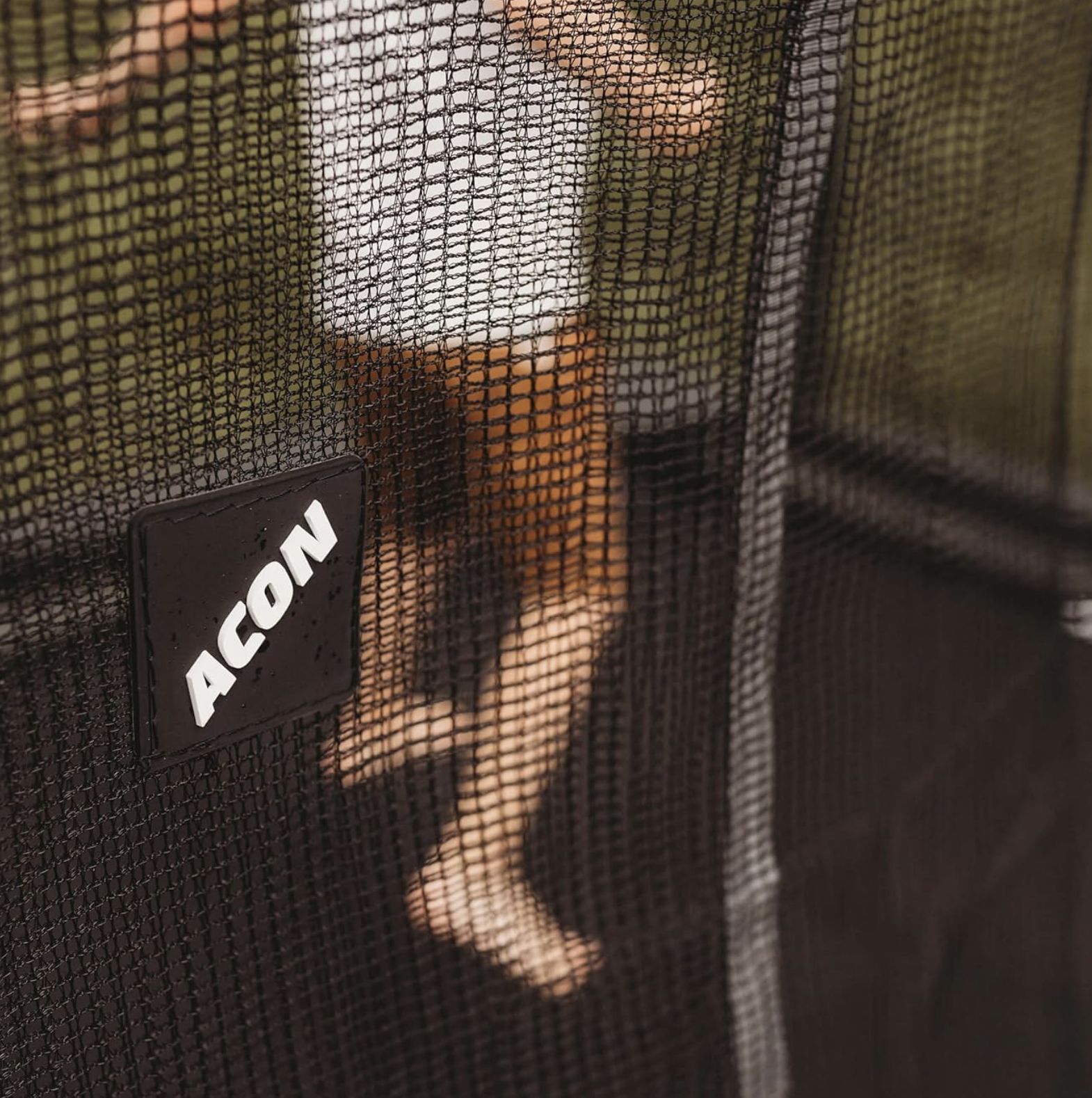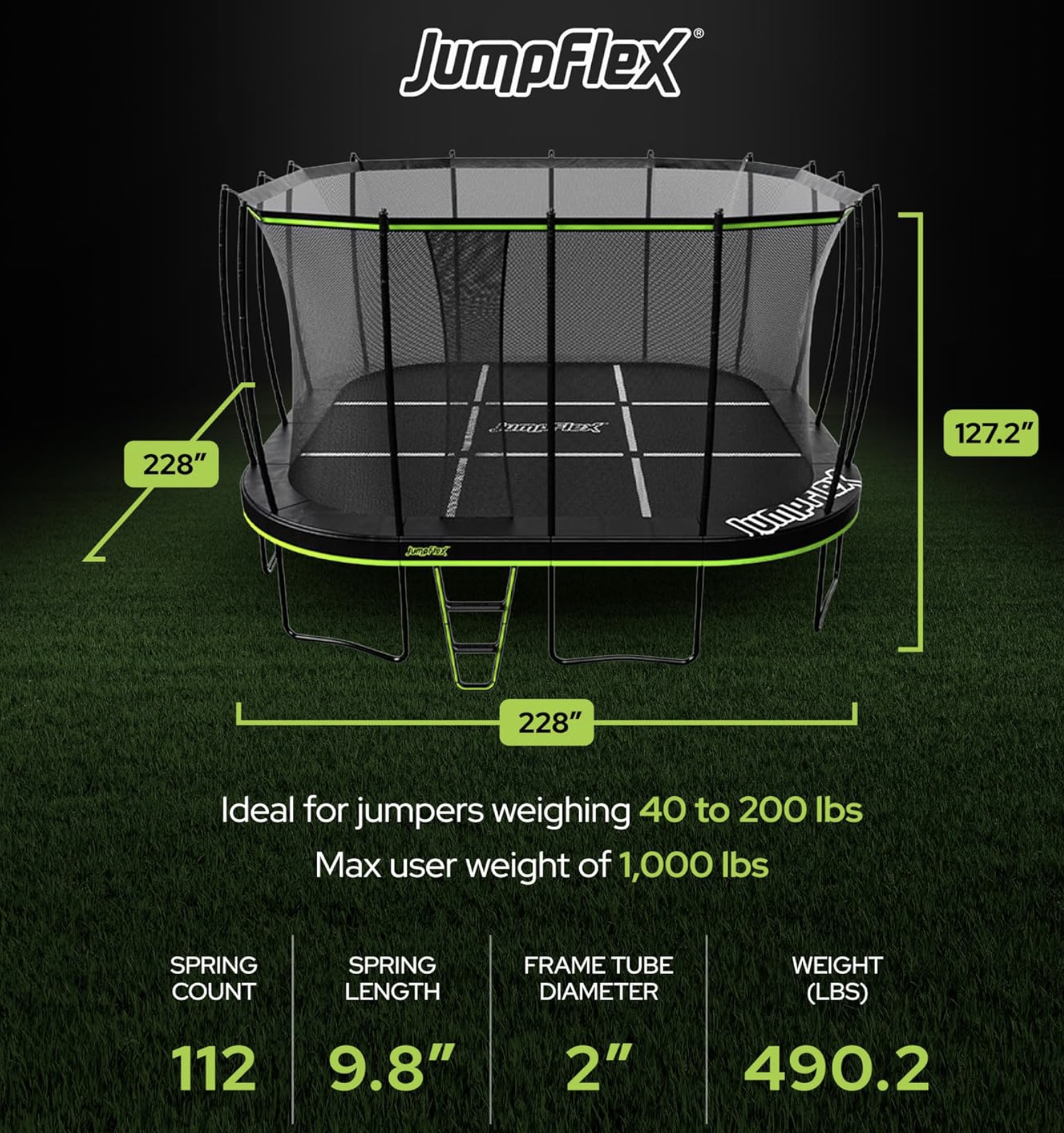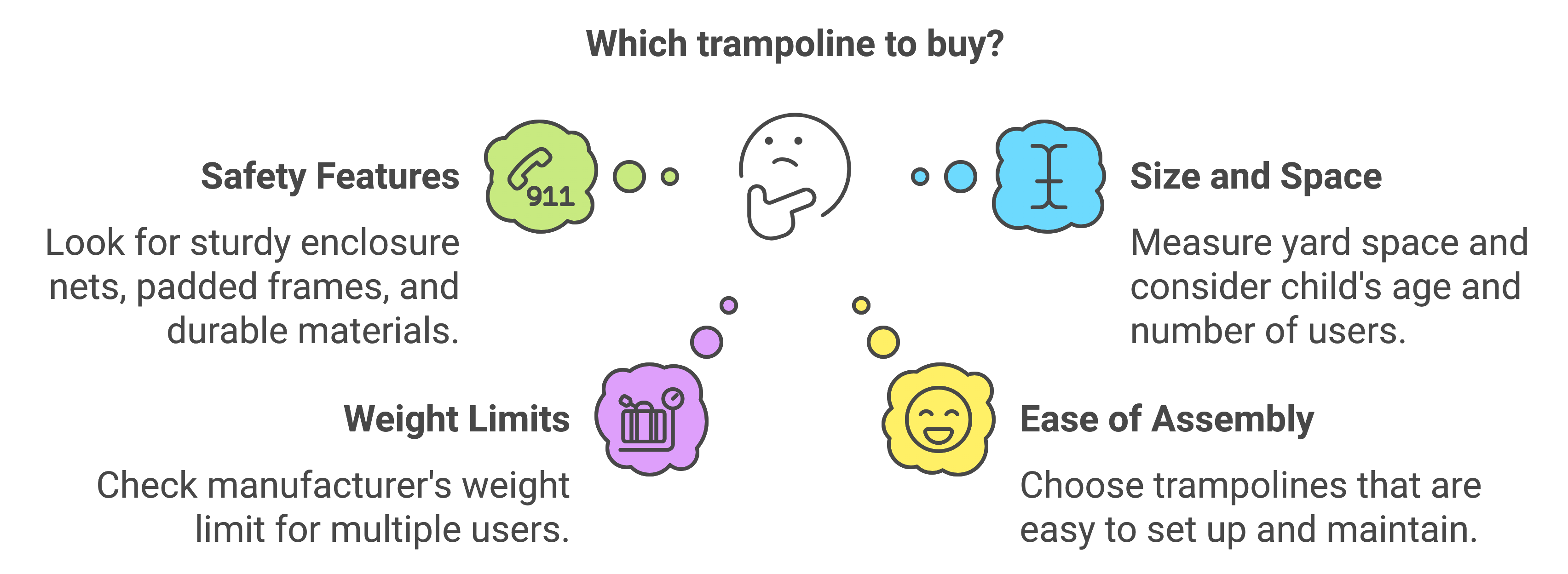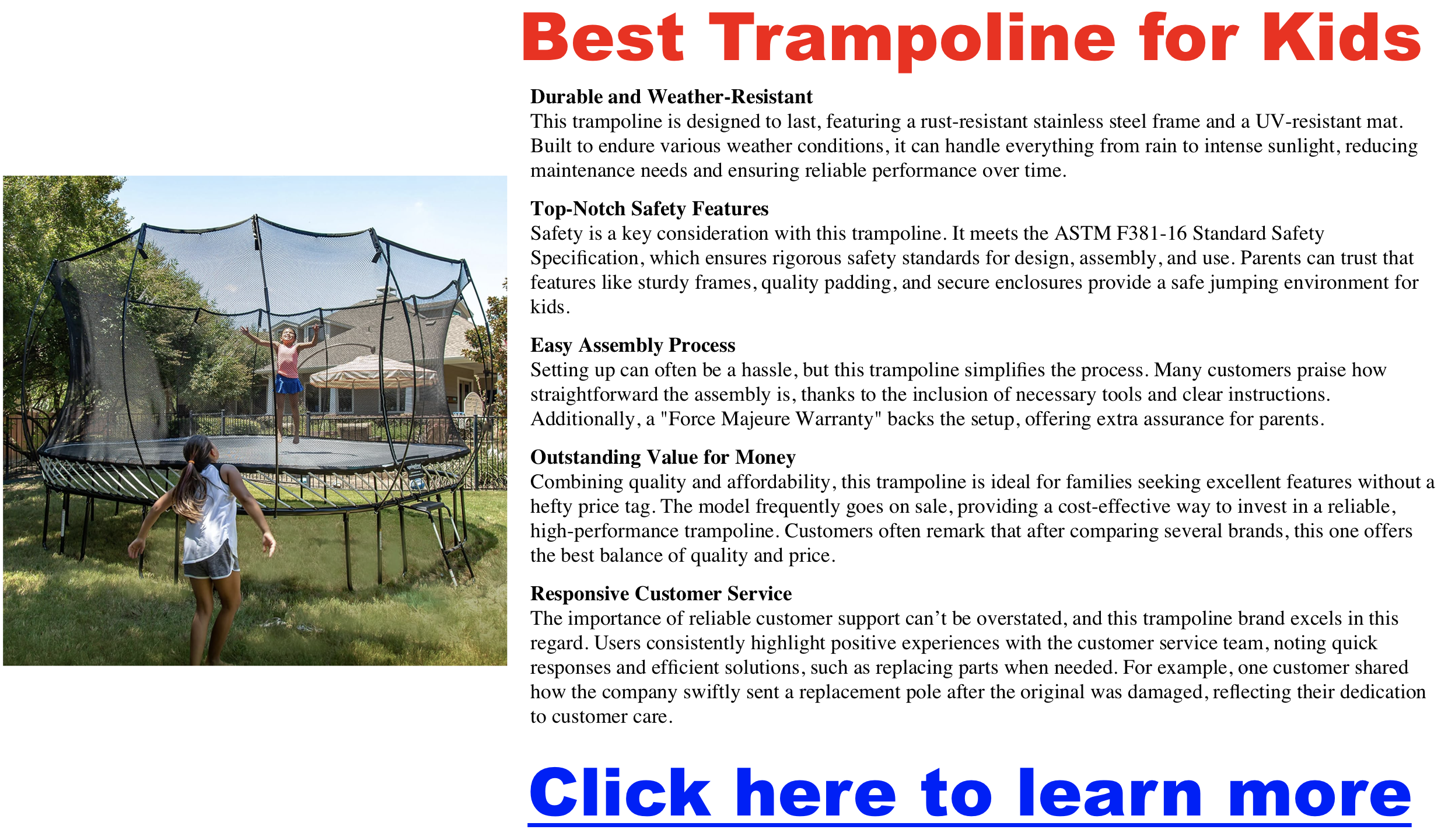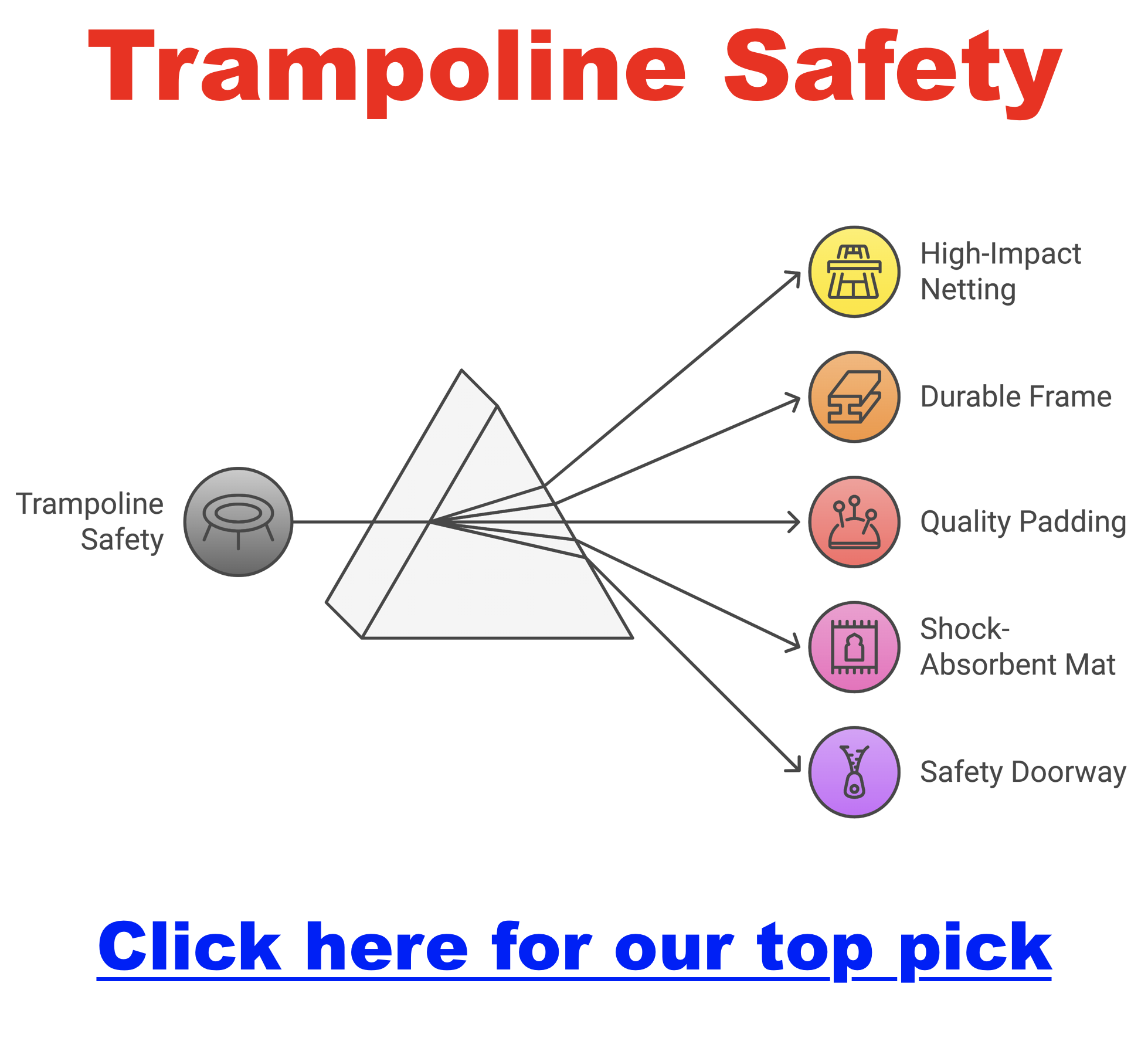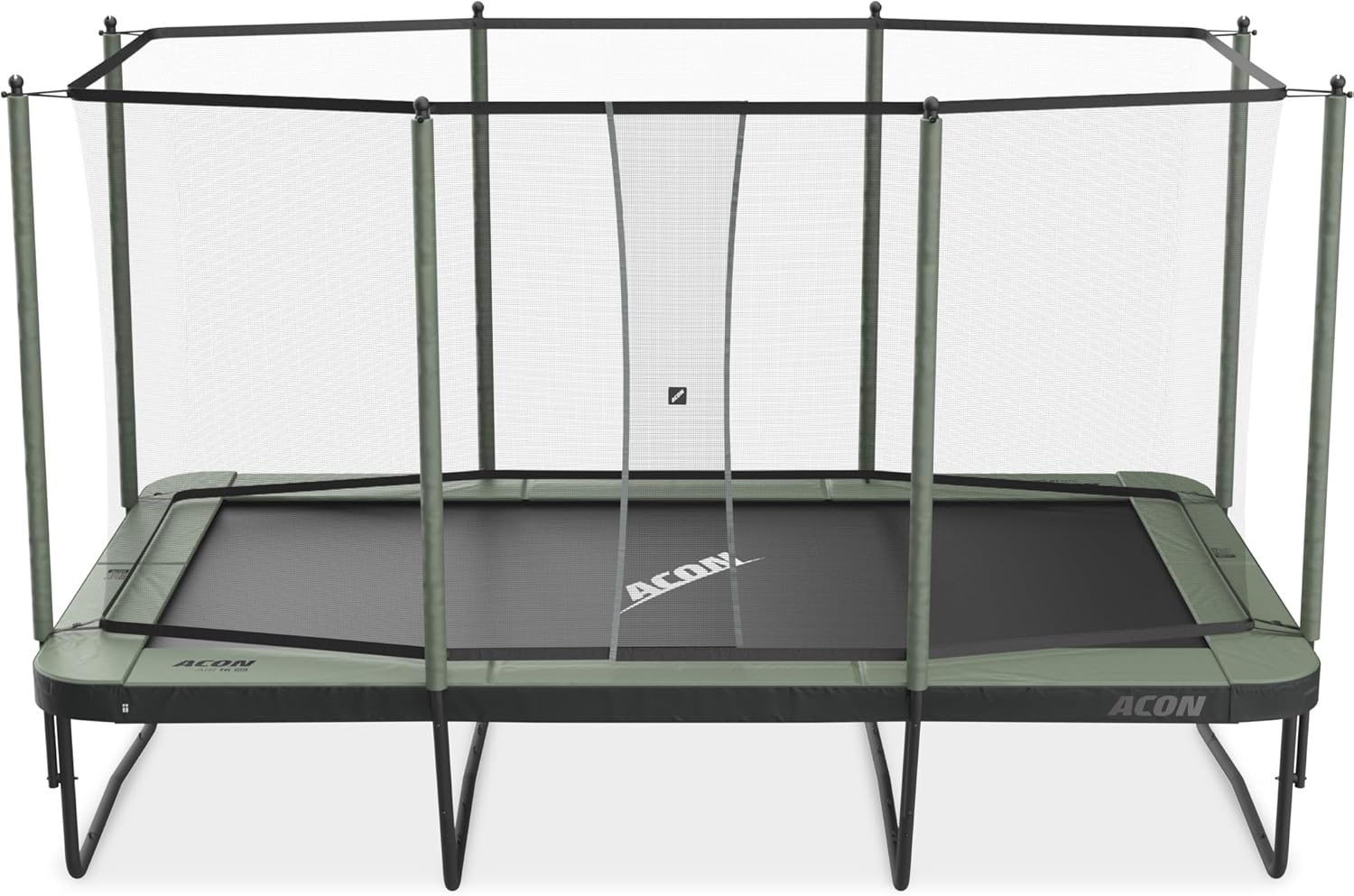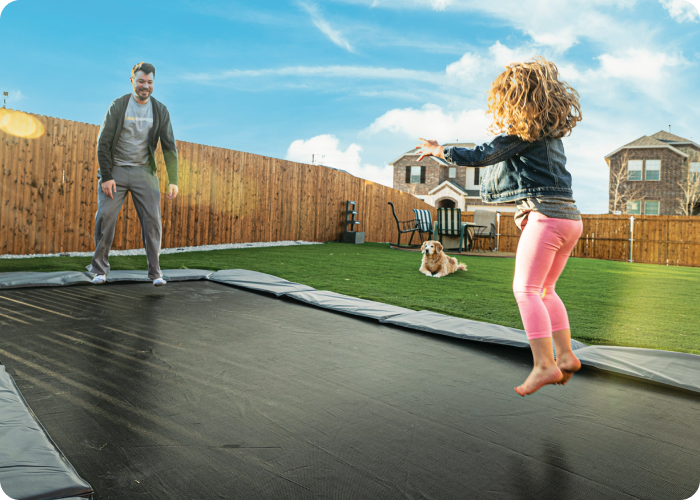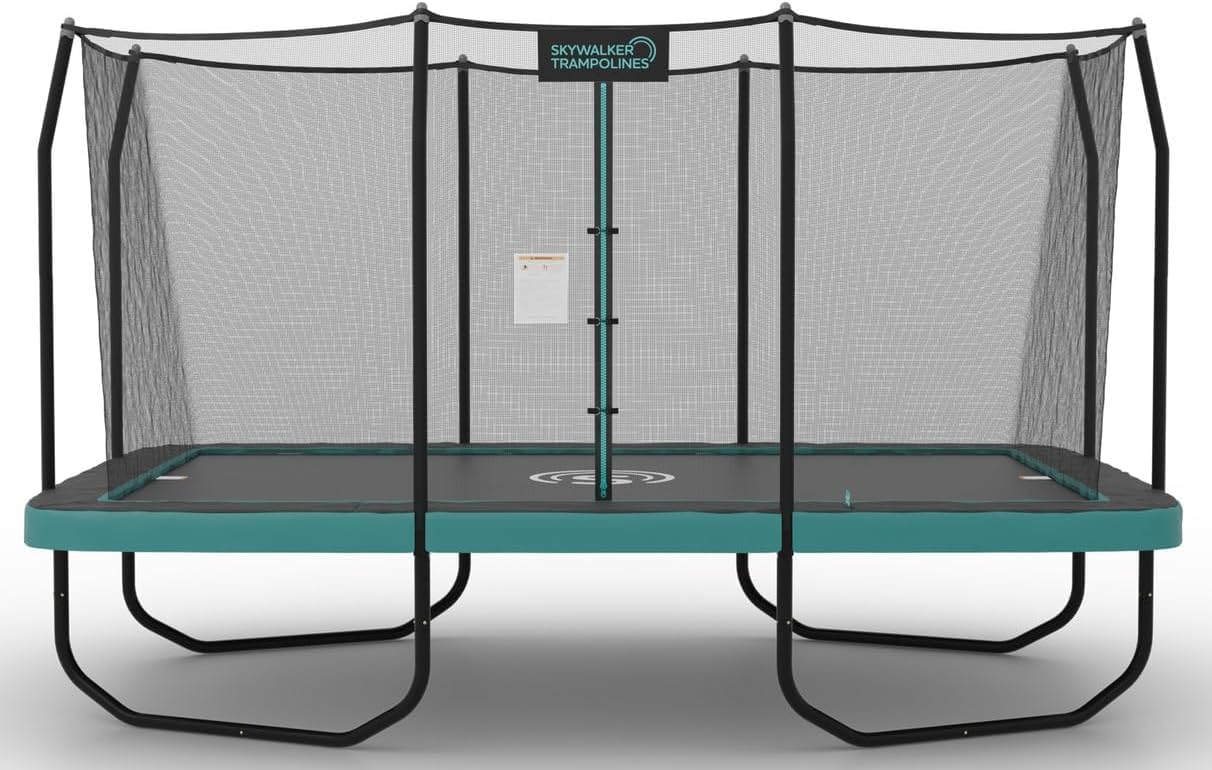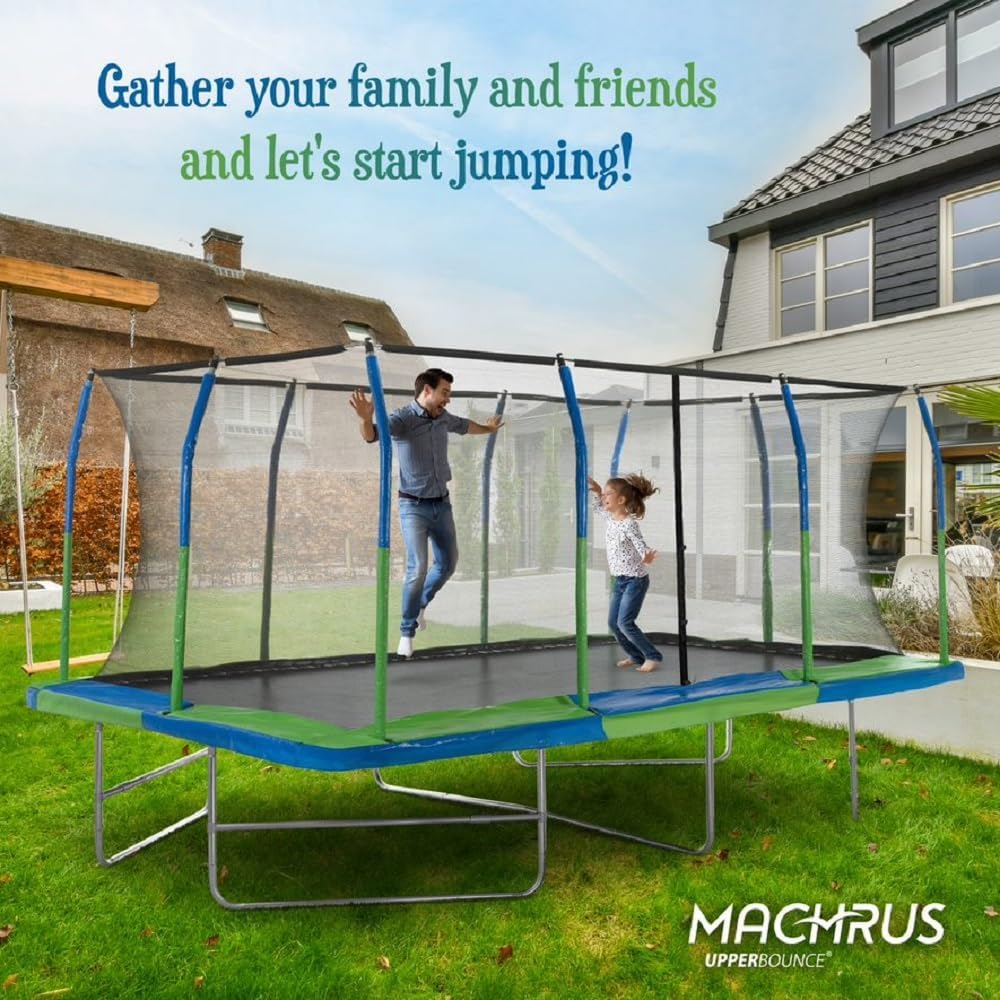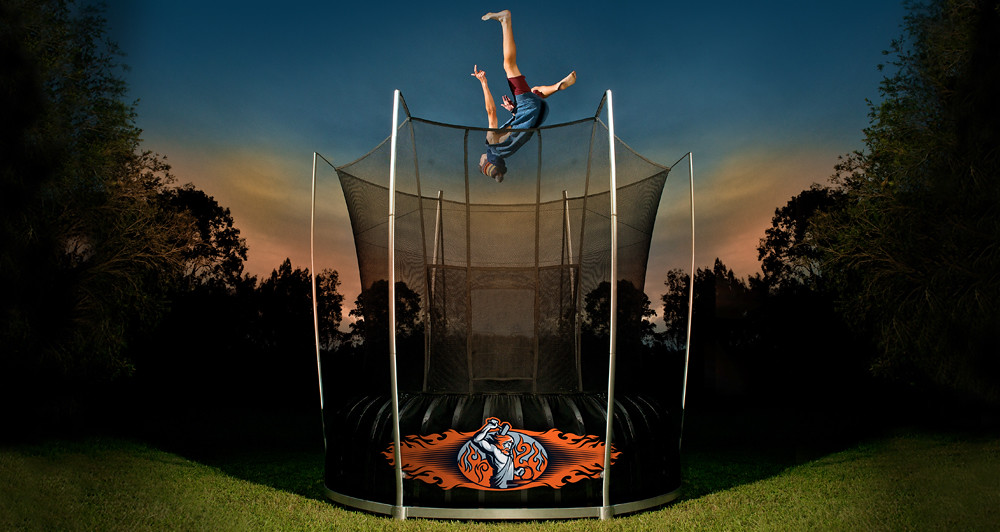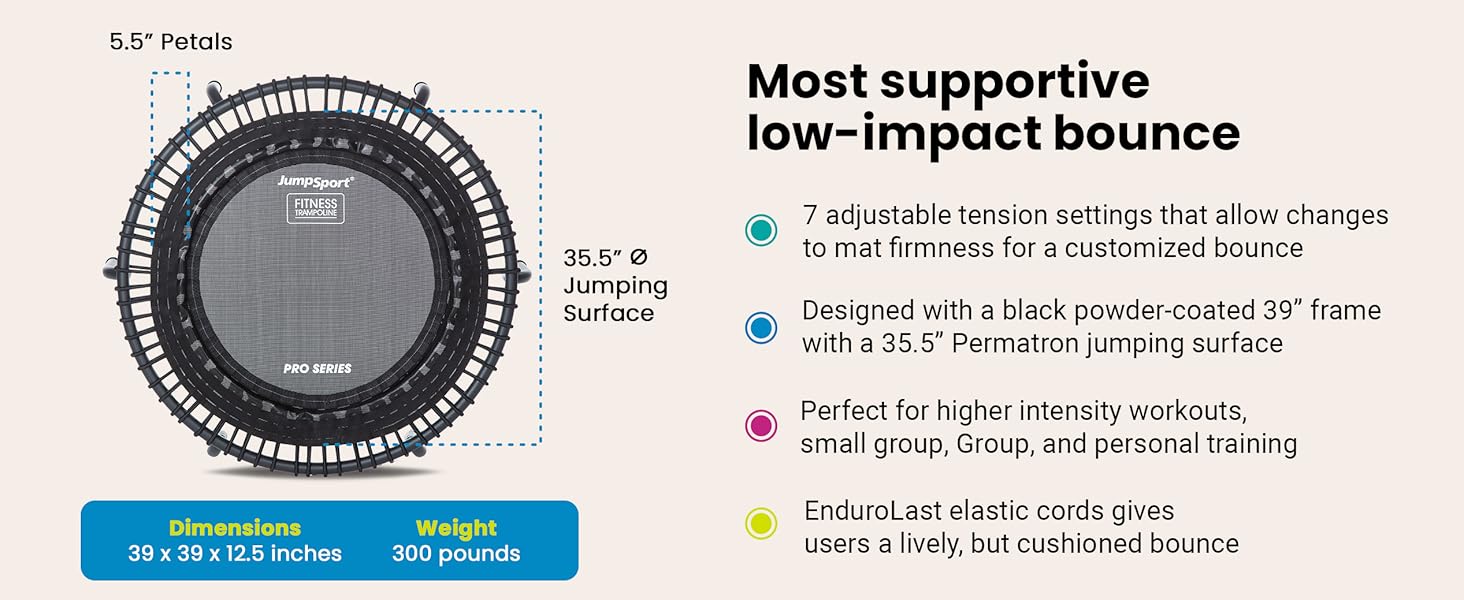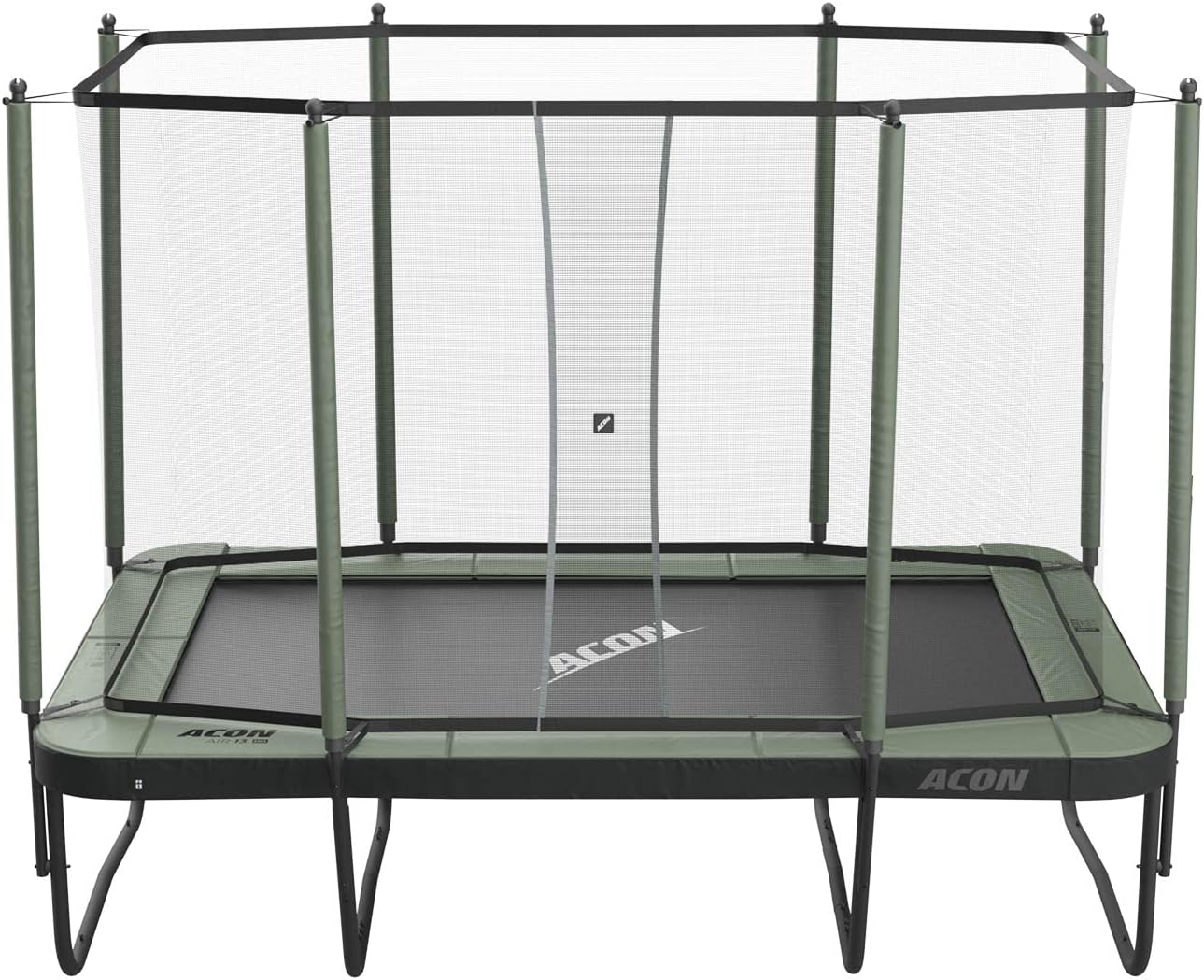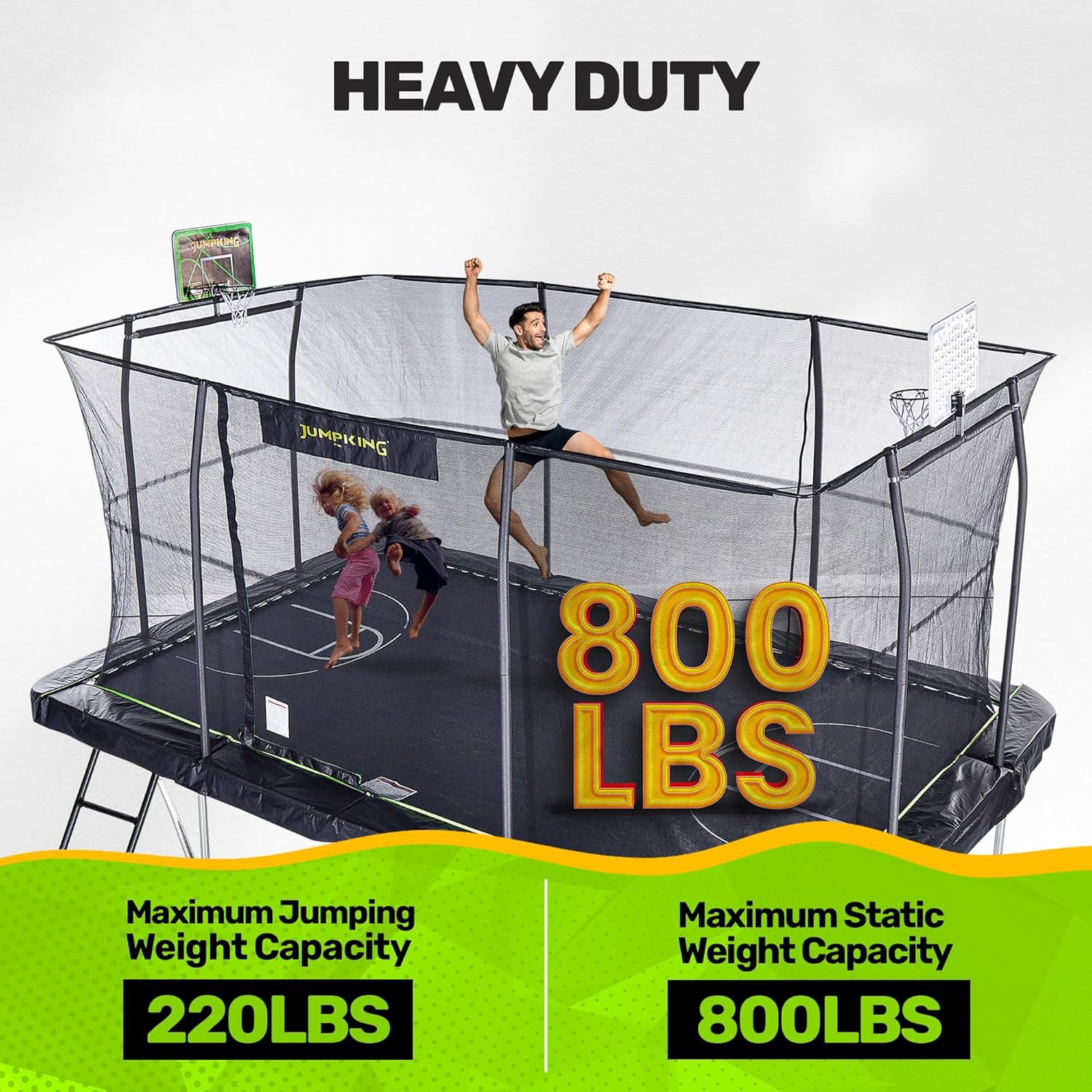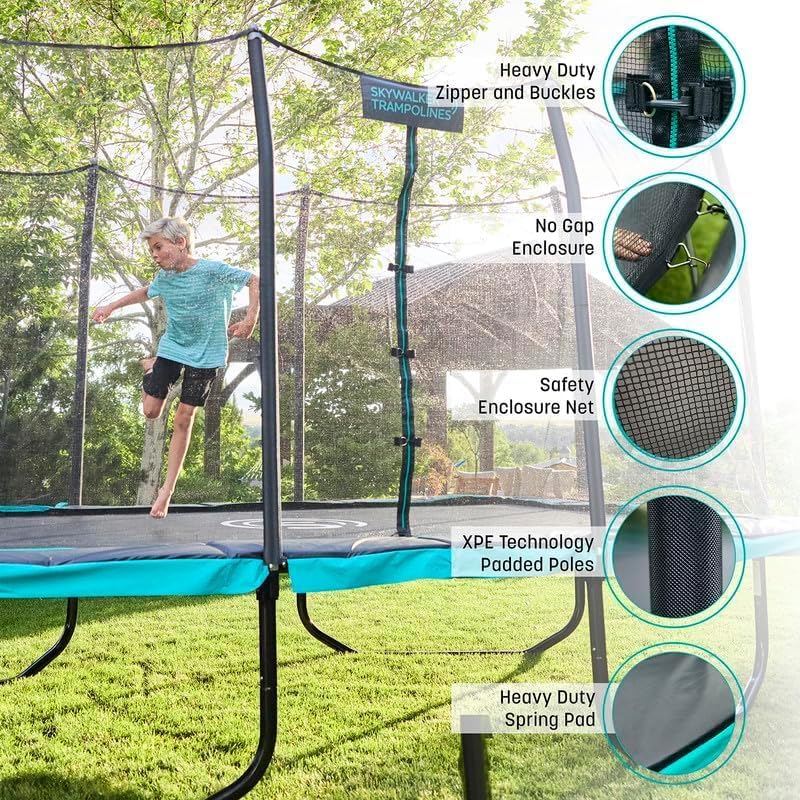admin
The 2026 Backyard Trampoline Buyer’s Guide
The humble backyard trampoline has undergone a silent revolution. Once a simple recreational toy, it has transformed into a sophisticated piece of athletic equipment, engineered with precision to deliver both exhilarating performance and uncompromising safety. This isn’t just about buying a bounce; it’s about investing in kinetic energy management, advanced material science, and structural integrity that can withstand years of energetic play and challenging weather.
Navigating the market requires more than just picking a size. It demands an understanding of what truly makes a trampoline safe, durable, and fun. This guide will walk you through the essential considerations, including how to prepare your backyard for a trampoline, helping you decipher the engineering jargon and identify the perfect model for your home.
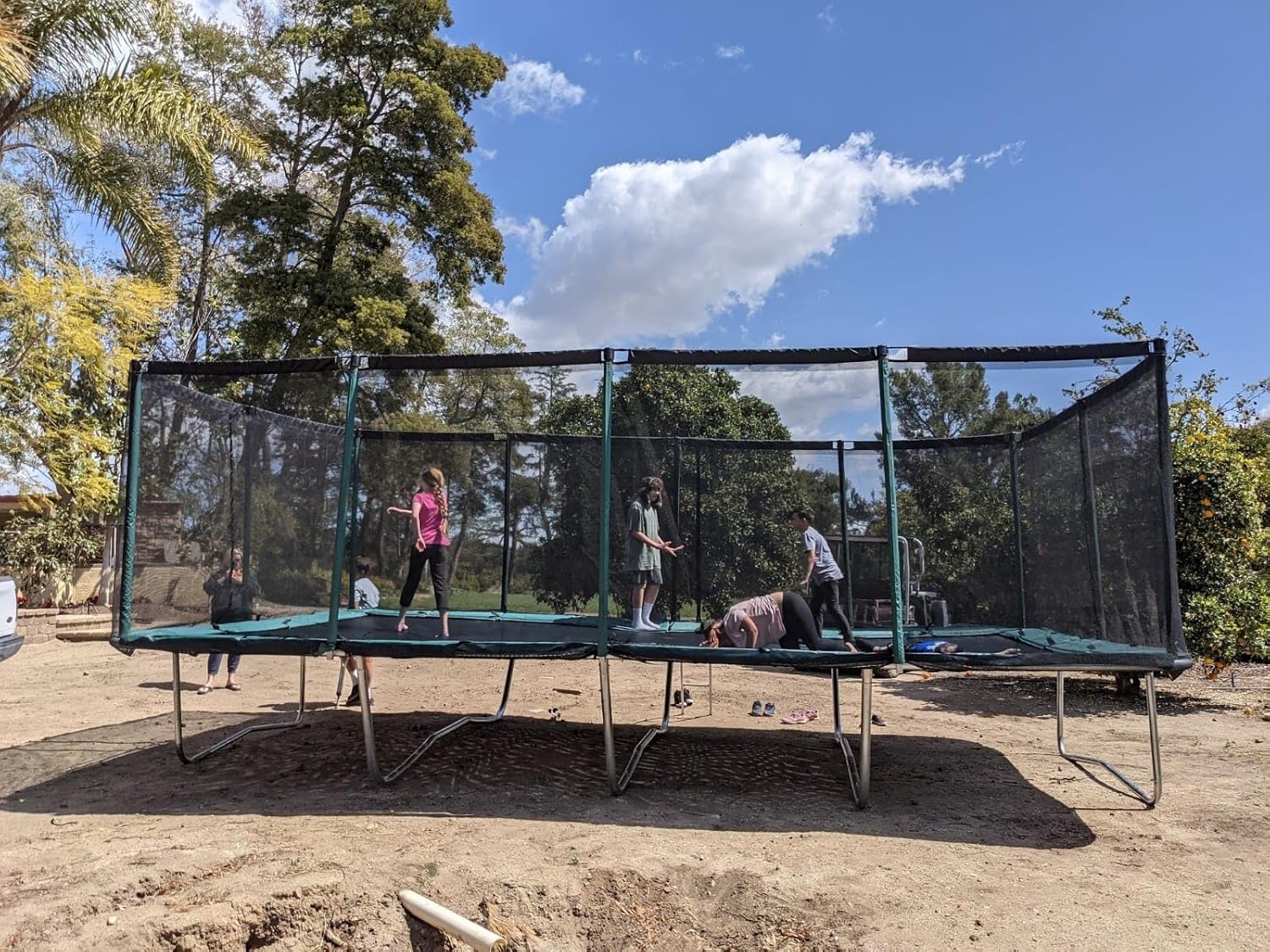
Finding Your Perfect Jumper Persona
Before diving into specs, ask yourself: Who will be jumping, and for what purpose? Your answer will immediately narrow down the field.
The Safety-First Family
You prioritize peace of mind above all else. Your focus is on eliminating pinch points, hard surfaces, and fall risks, especially for younger children. You’re willing to invest in cutting-edge designs that rewrite the rules of trampoline safety.
The Aspiring Athlete or Gymnast
You’re looking for serious airtime, consistent rebound, and space for tumbling or advanced tricks. Rectangular shapes, long springs, and high-performance mats are non-negotiable for achieving gymnastic prowess or aerial stunts.
The High-Capacity Household
With multiple energetic jumpers, teenagers, or even adults planning to join the fun, you need a trampoline built like a fortress. High weight limits, “zero-sway” frames, and expansive jumping surfaces are key to handling collective enthusiasm.
The Budget-Conscious Recreationalist
You want a reliable, fun, and safe trampoline without breaking the bank. You’re looking for the best value that meets essential safety certifications and offers a decent bounce for general backyard play.
Decoding the Core Technology: The “Big Three” Systems
The heart of any trampoline is its rebound system. Here’s how the leading technologies stack up:
| Rebound System | Core Mechanism | Characteristic Bounce | Ideal Application |
| High-Tensile Coils | Linear tension (Hooke’s Law) of piano-wire steel | High energy, responsive, athletic, powerful | Athletics, Gymnastics, advanced recreational |
| Composite Mat Rods | Cantilevered bending of fiberglass polymers | Soft landing, consistent, gentle deceleration | Safety-first families, low-impact exercise |
| Leaf Springs | Flexural compression of pre-curved steel plates | Even, stable, powerful, vertical, isolated from frame | Premium backyard use, unique safety architecture |
High-Tensile Coils: Still the benchmark for athletes, especially when made from high-tensile piano wire. Models like the ACON Air 16 HD utilize these for maximum energy return and responsiveness, allowing for incredible height and control.
Composite Mat Rods: Pioneered by Springfree, these revolutionary rods replace traditional springs entirely. They bend and flex beneath the mat, creating a “soft edge” and eliminating impact zones that cause most injuries. The result is a non-linear, softer bounce that’s incredibly forgiving on joints.
Leaf Springs: Found in systems like the Vuly Thunder Pro, these pre-curved steel plates offer a powerful, vertical bounce while completely isolating the rebound mechanism from the jumper. It’s a clever hybrid approach that prioritizes both performance and safety.
The Engineering Checklist: What to Look for Under the Hood
Beyond the springs, the underlying construction determines a trampoline’s lifespan and true safety.
The Foundation: Frame Physics
A flimsy frame dissipates energy, leading to a poorer bounce and faster metal fatigue. High-end manufacturers like Galactic Xtreme use heavy-duty galvanized steel frames with wall thicknesses up to 3.0 mm (9-gauge). This mass and rigidity are crucial for stability, especially during high-velocity maneuvers. For comparison, many budget models use thinner 1.5 mm steel.
Battling the Elements: The Rust Factor
Outdoor trampolines are constantly exposed to sun, rain, and temperature shifts. The best frames use hot-dip galvanization, a process that coats both the interior and exterior of the steel tubes with protective zinc, preventing rust from forming where you can’t see it. This is superior to standard spray galvanization, which often leaves the interior vulnerable.
Soft Part Longevity: Mats and Nets
The jumping mat (typically Permatron® polypropylene) and safety netting (often Raschel-knit polyethylene or polyester) are the primary failure points in cheaper models. Look for multi-layer UV treatments and materials that have undergone “wet-testing” or “salt-spray testing.” Brands like Springfree and ACON specifically engineer their soft parts for extreme environmental resilience, drastically extending their lifespan.
Safety Features That Truly Matter
Modern trampolines are designed with sophisticated safety architectures that go far beyond simple padding.
Passive Safety Systems
These features work automatically, without user intervention:
-
Curved Enclosure Poles: Angled away from the net, they create a buffer zone, preventing jumpers from colliding with hard supports.
-
Zipperless Doors: Overlapping entryways (like JumpSport AlleyOOP’s “UnForgettable” door) eliminate the common failure point of zippers, ensuring the enclosure is always secured.
-
Hidden Frames: Springfree’s design places the frame entirely beneath the jumping surface, making impact with hard metal impossible.
Active Safety Systems
These features require correct assembly to be effective:
-
No-Gap Enclosures: Found in models like Skywalker, this system threads the net directly through the mat’s V-rings, eliminating dangerous gaps between the mat and springs. Ensure it’s correctly installed to reap its benefits.
Enclosure Impact Strength
Don’t underestimate the net. High-end nets from brands like JumpSport and Springfree are rated to withstand an impact of nearly 300 lbs, capable of safely catching a fully grown adult falling at speed.
Deep Dives: Top 2026 Model Recommendations
Here’s a closer look at some of the industry’s leaders, categorized by their standout features:
The All-Around Safety King: Springfree Jumbo Square
Widely regarded as the safest trampoline ever engineered, the Springfree Jumbo Square completely removes springs and places its flexible composite rods beneath the jumping surface. This creates a “SoftEdge” mat and eliminates all traditional impact zones. With 155 square feet of usable jumping space (due to its edge-to-edge safety) and a 10-year warranty on all components, it’s the ultimate choice for peace of mind.
The Performance Heavyweight: ACON Air 16 HD Performance
For serious gymnasts, tricksters, or those craving extreme bounce, the ACON Air 16 HD is engineered for maximum energy return. Its “Synergy Design” and 140 ten-inch springs, combined with “FlowTech” mat technology, provide a professional-grade rebound. With a massive 1,650 lb static load capacity and no single-user weight limit, it’s built to perform under intense use.
The Mid-Budget Value Champion: Jumpflex HERO 14ft
The Jumpflex HERO offers an excellent blend of safety, quality, and aesthetic appeal at an accessible price point. Its “bolt-free” assembly simplifies setup, and the 1.7-inch zinc-coated steel frame comes with a generous 10-year warranty. Curved, padded enclosure poles and an “Endless Weave” UV-tested net ensure long-term safety and durability, making it ideal for most suburban families.
Total Cost of Ownership: An Essential Perspective
While a budget trampoline might seem appealing upfront, consider the “Total Cost of Ownership.” A $300 model with a 1-year warranty that needs replacement parts (or the entire unit) every two years quickly becomes more expensive than a premium model costing three times as much but lasting a decade or more without significant part replacement. Brands like Springfree and ACON, with their extensive warranties and durable materials, offer superior long-term value, reducing maintenance headaches and ensuring continuous, safe fun for years to come.
Best Trampoline for Kids
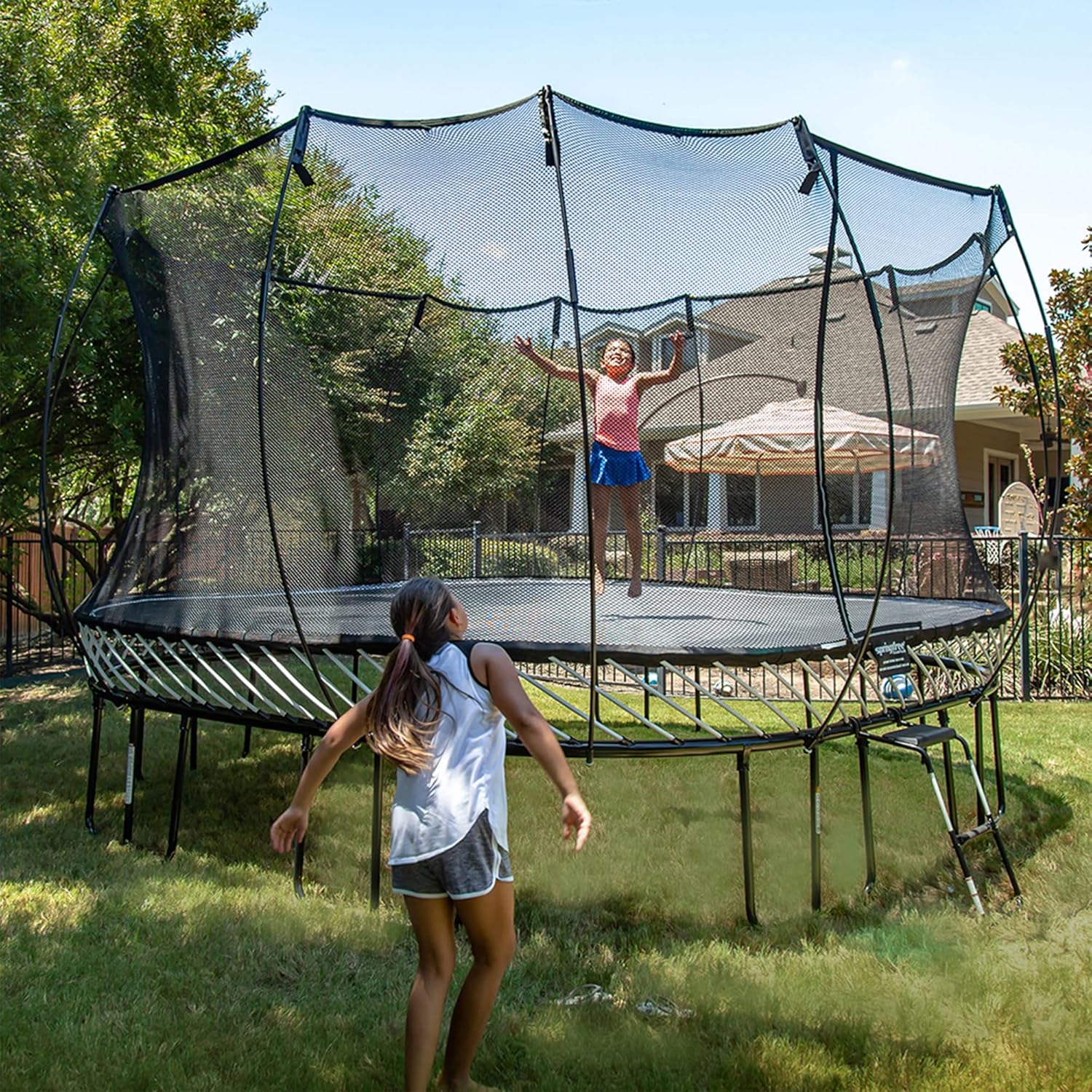
Click here for the overall top trampoline pick for kids
Choosing a trampoline for your kids can be exciting but also a big decision. With so many options out there, it’s important to focus on safety, quality, and durability to make sure you’re getting the best one. In this guide, we’ll walk you through some of the top trampolines for kids and share key factors to help you pick the right one for your family.
👉 Before you decide on a trampoline for your kits, grab our free Trampoline Buying Guide. It includes a detailed buying guide to help you choose the right trampoline and a safety checklist to keep your kids safe while they bounce. Get it here.
Best Trampoline for Kids
Springfree Square Backyard Trampoline with Enclosure
- Safety Features: Look for trampolines with sturdy enclosure nets, padded frames, and durable materials. Consider springless designs that eliminate common hazards like pinched fingers.
- Size and Space Requirements: Measure your yard and ensure there’s at least 2-5 feet of clearance around the trampoline. The right size depends on your child’s age, number of users, and available space.
- Weight Limits: Check the manufacturer’s weight limit to ensure the trampoline can handle multiple users safely.
- Ease of Assembly and Maintenance: Choose trampolines that are easy to set up and maintain. Regular inspections for wear and tear are necessary to keep the trampoline safe and functional.
Click here for the overall top trampoline pick for kids
Types of Trampolines for Kids
Click here for the overall top trampoline pick for kids
- Round Trampolines: Common for recreational use, they provide an evenly distributed bounce.
- Rectangular Trampolines: Preferred by gymnasts for a more powerful and controlled bounce.
- Square Trampolines: Combine the benefits of round and rectangular shapes, offering more jumping space with consistent bounce.
- Mini and Toddler Trampolines: Smaller models designed for indoor use, often with handles for added safety.
Best Trampolines for Kids
| Brand | Key Features | Shape Options | Weight Capacity | Click for Price |
|---|---|---|---|---|
| Springfree | Springless design, SoftEdge™ Mat | Round, Square, Oval | Up to 1,500 lbs | $$$$ |
| Skywalker | No-gap design, ASTM certified | Round, Rectangular, Oval | Up to 400 lbs | $$ |
| Acon Air | High flow bed, performance springs | Round, Rectangular | Multiple users | $$$ |
| Jumpflex | High-tensile steel frame, no-gap design | Round | Up to 550 lbs | $$$ |
| Jumpzylla | Rust-resistant, UV-resistant materials | Round | Varies | $$ |
Top Picks: Best Trampolines for Kids
Based on safety, quality, and user reviews, here are some of the best trampolines for kids:
Springfree Trampoline Jumbo Square
- Key Features: Springfree trampolines are designed with safety as the top priority. Instead of traditional springs, they use flexible composite rods beneath the jumping surface, which eliminates the risk of injuries. Other safety features include the SoftEdge™ Mat, a hidden frame, and the FlexiNet® enclosure.
- Shape Options: Available in round, square, and oval shapes.
- Weight Capacity: Up to 1,500 pounds.
- Why It’s Great for Kids: The innovative design minimizes risks, making it an excellent choice for families who prioritize safety.
Skywalker Trampolines – Jump-N-Dunk
- Key Features: Known for affordability and safety, Skywalker trampolines include tightly-woven enclosure nets, a no-gap design, and meet ASTM safety standards.
- Shape Options: Round, rectangular, and oval.
- Weight Capacity: Up to 400 pounds, depending on the model.
- Why It’s Great for Kids: A budget-friendly option without compromising safety. The no-gap design reduces the chance of accidents, making it ideal for younger children.
- Key Features: Durable with high-quality bounce, Acon Air trampolines feature a ‘high flow‘ bed that reduces air drag, enhancing performance. Users commend the brand for its long-lasting construction.
- Why It’s Great for Kids: Ideal for active children who enjoy high-energy bouncing, with strong materials that ensure the trampoline holds up over time.
- Key Features: Built with high-tensile steel frames, 360-degree safety nets, padded poles, and a no-gap design to ensure safety.
- Weight Capacity: Can hold up to 550 pounds.
- Why It’s Great for Kids: Combines a sturdy build with robust safety features, making it suitable for multiple users.
- Key Features: Designed with rust-resistant steel frames and UV-resistant mats, Jumpzylla trampolines adhere to ASTM F381-16 safety standards.
- Why It’s Great for Kids: Prioritizes safety and durability, making it a reliable pick for families looking for a trampoline that will last.
Safety When Choosing a Trampoline for Kids
Springless Trampolines
Springless trampolines, especially those produced by Springfree, are highlighted as one of the safest options available. Traditional trampolines use metal springs that pose a significant injury risk, as children may get their fingers or toes caught. Springless models, like Springfree’s, eliminate this hazard by using flexible composite rods or elastic bands beneath the jumping surface. This design prevents exposure to dangerous parts and provides a smoother, more controlled bounce. More on trampoline safety features here.
Key Safety Features:
- SoftEdge™ Mat: This mat, exclusive to Springfree, is 30 times more shock-absorbent than standard trampoline pads, reducing the risk of injuries from falls.
- Hidden Frame: The frame is placed beneath the jumping surface, out of the way of jumpers, to eliminate the possibility of contact.
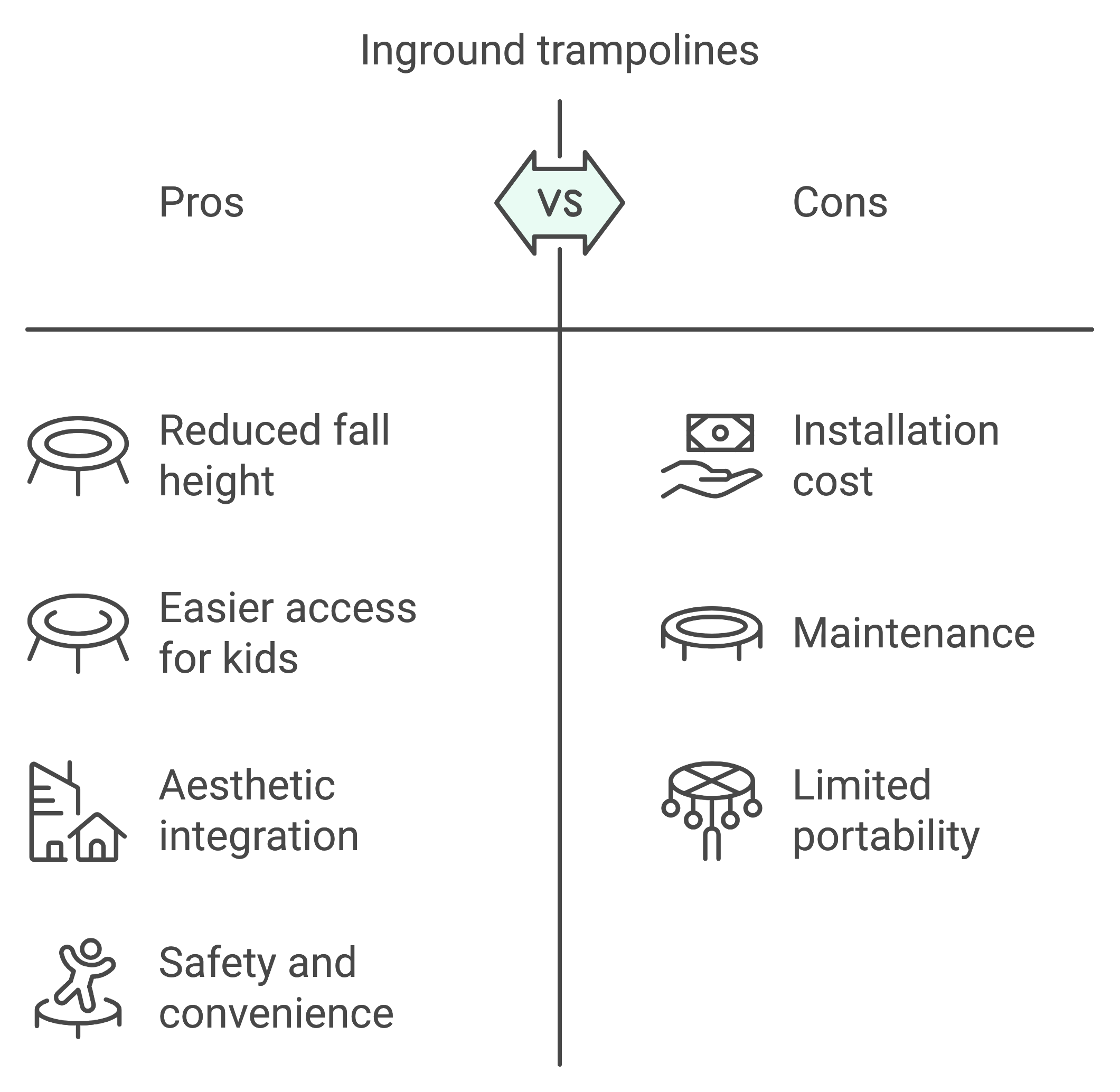
Inground Trampolines
Inground trampolines are installed at ground level, reducing the fall height and minimizing the risk of serious injuries. These trampolines are easier for younger children to access and can be integrated aesthetically into outdoor spaces. They are a popular choice for families looking to blend safety with convenience.
Why They’re Safer:
- Reduced Fall Height: Being at ground level means there’s less distance to fall, lowering the risk of injury.
- Easier Access: Younger kids can easily get on and off without climbing, reducing the chance of accidental slips.
Traditional Trampolines with Enhanced Safety Features
Even traditional spring trampolines can be safe if they include the right safety enhancements. Here are some features to prioritize:
- High-Impact Enclosure Netting: Keeps jumpers within the safe jumping area and prevents falls.
- Durable Frame Construction: A sturdy frame, often made of galvanized steel, prevents tipping or collapsing.
- Quality Padding: Thick padding over springs and frame edges helps cushion any accidental contact, minimizing injury risks.
- Shock-Absorbent Mat: High-quality mats can absorb impacts effectively, providing a safer jumping experience.
- Safety Doorway Options: Enclosures should have secure entry points, such as zippers or overlapping designs, to prevent accidental openings.
Top-Rated Brands for Safety
Certain brands consistently stand out for their dedication to safety:
- Springfree: Known for their innovative springless design, Springfree trampolines are regarded as some of the safest on the market. Independent safety bodies have given them a 100% performance rating, and they’ve eliminated 90% of trampoline-related injuries.
- Skywalker: This brand focuses on affordability without compromising safety, featuring tightly-woven enclosure nets, no-gap designs, and rigorous ASTM safety testing.
- Jumpflex: Offers a sturdy build with comprehensive safety features, including a 360-degree safety net that extends to the bottom of the mat, padded poles, and UV-resistant netting.
- Acon Air: Renowned for durability and performance, Acon Air trampolines also integrate safety features like upgraded springs and a high-flow bed for controlled, safe bouncing.
- Jumpzylla: These trampolines prioritize safety and adhere to ASTM F381-16 standards, ensuring safe design, components, and assembly.
Additional Safety Considerations
To ensure a safe trampoline experience, consider the following practices:
- Proper Setup: Always install the trampoline on a flat, level surface with sufficient clearance above and around it. Soft ground beneath the trampoline can help absorb impact from falls.
- Maintenance: Regularly inspect the trampoline for wear or rust on the springs, frame, jumping mat, and net. Promptly repair any signs of damage.
- Supervision: Never leave children unattended on the trampoline. Establish rules, such as no flips or roughhousing, to reduce the risk of accidents.
- Weight Limits: Respect the manufacturer’s specified weight limits to prevent overloading, which can lead to damage or injuries. Skywalker weight limits. Springfree weight limits.
- Age Appropriateness: Most sources recommend a minimum age of 6 for using a full-size trampoline. Younger children should stick to mini trampolines designed specifically for their age and size.
Essential Safety Tips for Parents
- Supervision and Usage Rules: Always supervise children and set rules for safe play, such as one jumper at a time.
- Proper Use Recommendations: Encourage children to jump in the center and avoid dangerous stunts.
- Maintenance Checks: Regularly inspect for rust, loose springs, and tears in the mat. Replace any damaged parts promptly.
Frequently Asked Questions (FAQ)
What Shape of Trampoline Is Best for Kids?
- Round trampolines are ideal for younger kids due to their consistent bounce, while rectangular trampolines are better for older, more active children who may want to practice tricks.
How Much Space Do I Need for a Trampoline?
- Ensure there is at least 2-5 feet of clearance around the trampoline. Measure your available yard space and consider overhead clearance as well.
Are Springless Trampolines Safer Than Traditional Ones?
- Yes, springless trampolines eliminate the risks associated with exposed springs, such as pinched fingers or toes.
What’s the Right Size Trampoline for My Child’s Age?
- Smaller trampolines (6-8 feet) are better for younger children, while larger ones (12-15 feet) are suitable for older kids and multiple users.
How Do I Maintain My Trampoline to Ensure Longevity?
- Regularly check for wear and tear, clean the mat, and use a cover during harsh weather. If possible, store it indoors during winter to extend its lifespan.
Can Adults Use These Trampolines?
- Yes, as long as the weight limit is not exceeded. Many trampolines are designed to accommodate both kids and adults.
What Are the Benefits of Trampoline Exercise for Kids?
- Jumping on a trampoline improves cardiovascular health, balance, and coordination. It’s also a great way to boost mood and reduce stress.
Top 5 Rectangle Trampolines for Adults
When it comes to trampolines for adults, shape matters. Round trampolines dominate backyards, but if you’re serious about bounce quality, durability, or gymnastics-level performance, rectangular trampolines are the gold standard. They provide a higher, more consistent bounce, support heavier weight capacities, and offer more usable jumping space.
This guide breaks down the five best rectangular trampolines for adults — with sizes, weight limits, features, pros, cons, and price ranges — so you can find the perfect fit.
Why Rectangle Trampolines Are Best for Adults
- Even bounce across the mat – springs stretch independently, so you don’t get pushed into the center.
- Higher bounce potential – ideal for gymnastics, cheer, diving, or CrossFit training.
- Larger usable surface – corners add functional jumping area.
- Better for heavier users – frames and mats are built for higher capacities than most round trampolines.
Click Here For Our Favorite Trampoline
How We Chose the Top 5
We evaluated trampolines based on:
- Weight capacity – static and jumper limits suitable for adults.
- Durability – frame thickness, spring design, weather protection.
- Safety features – nets, padding, certifications.
- Warranty – strong manufacturer backing.
- Real-world use – feedback from athletes, fitness enthusiasts, and families.
🏆 Top 5 Rectangle Trampolines for Adults
1. Acon Air 16 Sport HD Rectangular Trampoline
- Size: 17 × 9.8 ft
- Weight Capacity: 1,650 lbs static, no single-user limit
- Features: 144 heavy-duty 8.3″ piano-wire springs, AirFlow mat (70% more airflow), tall safety enclosure
- Warranty: 10 years on frame, 5 years on springs/mat
Pros:
✔ Exceptional bounce — professional-grade feel
✔ Extremely durable frame and springs
✔ No single-user weight cap (rare in the industry)
Cons:
✘ Premium price (~$2,500–$3,000)
✘ Heavy and complex assembly
Best For: Serious adult users, fitness training, or families wanting a long-term trampoline.
2. Avyna Pro-Line Rectangle 10×17 ft
- Size: 10 × 17 ft
- Weight Capacity: 1,800 lbs tested
- Features: 128 large 8.5″ galvanized springs, Air X-TREAM mat, hot-dipped galvanized 11-gauge frame (rust-proof)
- Warranty: Lifetime frame, 3–5 years springs/mat
Pros:
✔ Extremely durable, built for decades
✔ Huge tested capacity
✔ Can be installed above ground or inground
Cons:
✘ Very expensive ($3,700+)
✘ Best for large yards
Best For: Buyers prioritizing long-term durability and professional-level performance.
3. Skywalker 17′ × 10′ Rectangle Olympic-Sized Trampoline
- Size: 17 × 10 ft (overall height ~10.8 ft)
- Weight Capacity: Up to 625 lbs (ASTM-tested, 4× load verified)
- Features: Oversized galvanized steel frame, springs over 50% larger than traditional Skywalker models, patented no-gap enclosure that interlocks net and mat to eliminate pinch points, reinforced T-sockets for extra stability
- Warranty: 10 years on frame & springs, 2 years on other parts
Pros:
✔ High weight capacity (625 lbs) — excellent for adults and families
✔ Even, consistent bounce across the mat
✔ ASTM-certified safety with no-gap enclosure system
✔ More affordable than ultra-premium models (~$1,600)
Cons:
✘ Warranty on non-structural parts is shorter (2 years)
✘ Not as heavy-duty or long-lasting as ACON, Avyna, or BERG
✘ Large, heavy, and requires significant yard space
Best For: Adults and families wanting a high-capacity, mid-priced rectangle trampoline with strong safety features and reliable bounce, without stepping into the ultra-premium price tier.
4. Upper Bounce Mega 10′ x 17′ Gymnastics Rectangle Trampoline
- Size: 10 × 17 ft
- Weight Capacity: 500 lbs
- Features: 108 galvanized springs, fiber-top enclosure net, 36″ frame height
- Warranty: 1 year on frame/springs
Pros:
✔ Affordable (~$1,300–$1,600)
✔ Comes with safety net
✔ Large jumping surface
Cons:
✘ Lower weight capacity than premium models
✘ Shorter warranty
Best For: Families or adults wanting a budget-friendly rectangle trampoline without sacrificing size.
5. Galactic Xtreme 13×23 ft
- Size: 13 × 23 ft
- Weight Capacity: 550 lbs
- Features: 172 heavy-duty 9″ springs, 3.0 mm steel frame, safety net included
- Warranty: Lifetime on frame and springs
Pros:
✔ Massive jumping surface (one of the largest residential trampolines available)
✔ Very robust with lifetime frame/spring warranty
✔ Great for group or gym-style use
Cons:
✘ Oversized — requires a huge yard
✘ Expensive (~$2,999)
Best For: Adults who want a supersized trampoline or gyms looking for heavy-duty equipment.
📊 Comparison Table: At a Glance
| Model | Size | Weight Capacity | Price Range | Best For |
|---|---|---|---|---|
| ACON Air 16 Sport HD PRO | 17×10 ft | 1,650 lbs (no single-user cap) | $2,500–$3,000 | Best Overall |
| Avyna Pro-Line 10×17 | 10×17 ft | 1,800 lbs | $3,700+ | Longevity |
| Skywalker 17′ | 11×17 ft | 350 lbs | $1,500+ | Gymnastics |
| Upper Bounce 10×17 | 10×17 ft | 500 lbs | $1,300–$1,600 | Budget |
| Galactic Xtreme 13×23 | 13×23 ft | 550 lbs | ~$2,999 | Oversized |
FAQ: Rectangle Trampolines for Adults
Why are rectangle trampolines more expensive?
They use thicker steel frames, longer springs, and pro-grade mats for higher performance.
Can multiple adults jump at the same time?
Even with high static limits, it’s safest to allow one jumper at a time.
Which has the highest weight capacity?
The Avyna Pro-Line (1,800 lbs tested) and ACON Air 16 (1,650 lbs, no jumper cap).
Do they last longer than round trampolines?
Yes — premium rectangle trampolines often last 10+ years with proper care, especially with warranties up to lifetime on frames.
Expert Tips for Adult Use
- Choose the right size for your yard — many rectangles need more space than round models.
- Stick to the published jumper weight limits even if the structural capacity is higher.
- Use a safety enclosure, especially for higher bounce trampolines.
- Clear off snow, water, or debris to prevent frame stress.
- Register your warranty immediately after purchase.
Conclusion
For adults, rectangle trampolines deliver superior bounce, durability, and support compared to round models.
- 🥇 Best Overall: ACON Air 16 Sport HD PRO
- 🛡️ Most Durable: Avyna Pro-Line 10×17
- 🤸 Best for Gymnastics: Galactic Xtreme 13×23
- 💲 Best Budget Pick: Upper Bounce 10×17
- 🌍 Biggest Option: Galactic Xtreme 13×23
No matter your choice, a rectangle trampoline gives you professional-level performance and safety — making it the best long-term investment for adults.
Springfree Trampoline Warranty: What You Need to Know
When you’re investing in a premium trampoline, the warranty matters almost as much as the weight limits and safety features. Springfree sets itself apart with one of the most comprehensive warranties in the industry.
Full Coverage for 10 Years
Every new Springfree trampoline purchased since September 2017 has a 10-year warranty on all components. That means the frame, mat, rods, net, and padding are covered — bumper to bumper — for a full decade. Most competitors only cover parts of the trampoline for 1–5 years.
Accessories & Spare Parts
-
Accessories (like ladders, sunshades, and anchors): 1-year warranty
-
FlexrBall: 3 months
-
Spare parts purchased separately: 2-year warranty
Transferable Warranty
Another standout: Springfree’s warranty is transferable. If you buy or sell a used Springfree trampoline, the remaining coverage carries over with proof of purchase — rare in the trampoline market.
What’s Not Covered
Like most warranties, it excludes:
-
Misuse, improper setup, or commercial use
-
Weather damage (snow, wind, storms)
-
Normal wear and tear
The Bottom Line
Springfree’s 10-year all-parts warranty makes it one of the most reliable family trampolines you can buy. If long-term durability and peace of mind are high on your list, Springfree’s warranty coverage is a major reason to choose them over budget brands.
Springfree Trampoline Weight Limits: Everything You Need to Know
When you’re shopping for a trampoline, weight limits are one of the first things to check. If the trampoline can’t handle your kids, teens, or even adults, it won’t be safe or last very long. Springfree trampolines are famous for their springless design and safety features — but how much weight can they really hold?
This guide breaks down the Springfree trampoline weight limits by model, explains the difference between “jumper” and “structural” limits, compares Springfree with major competitors, and answers the most common questions buyers ask.
Understanding Trampoline Weight Limits
Not all weight ratings mean the same thing. Springfree trampolines publish two separate limits:
-
Single Jumper Weight Limit
The maximum recommended weight for one person bouncing. This is the safety limit because jumping generates forces far greater than body weight. -
Structural (Static) Load Capacity
The total amount of weight the trampoline can hold at rest without collapsing or bending. This is often much higher but doesn’t apply to active bouncing.
👉 Example: A 220-lb person landing from a jump might exert 600 lbs or more of force. That’s why the jumper limit is set lower than the frame’s static strength.
Springfree Trampoline Weight Limits by Model
Here’s a complete rundown of Springfree’s trampolines, including both single jumper and structural load capacities:
| Model (Code) | Size & Shape | Single Jumper Limit | Structural Load Limit |
|---|---|---|---|
| Mini Round (R30) | 6 ft round | 175 lbs (79 kg) | 1,300 lbs (590 kg) |
| Compact Round (R54) | 8 ft round | 175 lbs (79 kg) | 1,300 lbs (590 kg) |
| Medium Round (R79) | 10 ft round | 220 lbs (100 kg) | 1,500 lbs (680 kg) |
| Compact Oval (O47) | 6 × 9 ft oval | 175 lbs (79 kg) | 1,300 lbs (590 kg) |
| Medium Oval (O77) | 8 × 11 ft oval | 220 lbs (100 kg) | 1,500 lbs (680 kg) |
| Large Oval (O92) | 8 × 13 ft oval | 220 lbs (100 kg) | 1,500 lbs (680 kg) |
| Jumbo Oval (O200) | 12 × 19 ft oval | 220 lbs (100 kg) | 1,500 lbs (680 kg) |
| Large Square (S113) | 11 × 11 ft square | 220 lbs (100 kg) | 1,500 lbs (680 kg) |
| Jumbo Square (S155) | 13 × 13 ft square | 220 lbs (100 kg) | 1,500 lbs (680 kg) |
Key takeaway:
-
Smaller models (Mini/Compact) = 175 lbs jumper limit / 1,300 lbs structural.
-
Medium and larger models = 220 lbs jumper limit / 1,500 lbs structural.
Yes, Springfree trampolines are literally strong enough to support a small car on the mat — but the real safety limit for bouncing is 175–220 lbs per person.
How Springfree Compares to Other Trampoline Brands
Springfree isn’t the only premium trampoline on the market. Here’s how its weight ratings compare with other major brands:
| Brand / Model | Size Example | Single Jumper Limit | Structural Capacity |
|---|---|---|---|
| Springfree (Large/Jumbo) | 11–13 ft square / 12×19 ft oval | 220 lbs | 1,500 lbs |
| Skywalker 15′ Round | 15 ft round (springs) | 200 lbs | ~800 lbs |
| JumpSport / AlleyOOP 14′ | 14 ft round | 245–270 lbs | ~800 lbs |
| ACON Air 16 Sport HD | 16 × 10 ft rectangle | 330 lbs | 1,650 lbs |
| Vuly Thunder Pro (Large) | ~14 ft round (springless) | 330 lbs | 1,650 lbs |
Highlights:
-
Springfree = strongest safety-first design, very sturdy 1,500-lb frames, but capped at 220 lbs per jumper.
-
ACON & Vuly = better for heavier adults, with jumper limits of 330 lbs and structural loads of 1,650 lbs.
-
JumpSport = solid mid-tier, ~250 lbs jumper, ~800 lbs structural.
-
Skywalker = most budget-friendly, but lower strength (~200 lbs jumper).
Common Questions About Weight Limits
Why is the jumper limit lower than the structural limit?
Jumping multiplies weight forces. A person at 220 lbs can land with more than 600 lbs of force. The jumper limit prevents bottoming out.
Can multiple kids jump if their combined weight is under the limit?
Not safely. Trampolines are designed for one jumper at a time. Collisions are the #1 cause of trampoline injuries.
What happens if you exceed the limit?
You risk overstressing the mat, bending rods, or damaging the frame. It can also void the warranty.
Are Springfree trampolines suitable for adults?
Yes, as long as the adult is under 220 lbs. Heavier adults should consider ACON or Vuly.
Does weather affect weight safety?
Yes. Snow and ice add static load. Always clear buildup to protect the frame.
Do trampolines weaken over time?
Yes. UV exposure, heavy use, and age can reduce strength. Regular inspections help catch wear early.
Safety & Longevity Tips
-
Always follow the published jumper limits.
-
Limit use to one jumper at a time.
-
Clear off snow or water buildup to avoid frame stress.
-
Inspect mats, rods, and frames regularly.
-
Respect warranty conditions to keep coverage.
Who Should Choose a Springfree Trampoline?
Springfree is the right choice if you:
-
Want the safest trampoline design (no springs, hidden frame).
-
Have kids or teens under the 175–220 lb limits.
-
Value long-term durability and a strong static frame.
-
Prefer safety over maximum adult jumper capacity.
If you want a trampoline for heavier adults (230–300+ lbs), consider ACON or Vuly.
Conclusion
Springfree trampolines are built with exceptional structural strength (1,300–1,500 lbs) and safe jumper limits of 175–220 lbs, depending on the model. That makes them more than strong enough for families, while keeping safety at the forefront.
If you need a trampoline that balances safety engineering, durability, and family-friendly design, Springfree is hard to beat. If you need higher adult weight capacity, look at ACON or Vuly — but expect to sacrifice some of Springfree’s unique safety features.
Top Garden Trampolines for Safe Backyard Fun
Click Here For Our Favorite Garden Trampoline
When considering the best heavy-duty trampoline options for a garden, the focus shifts from sheer performance to aesthetic integration and discreet placement. Garden trampolines should not only perform well, but also blend beautifully into your outdoor space without overwhelming it.
This guide reviews the top trampoline models that deliver both form and function, with in-ground options and sleek above-ground designs perfect for maintaining the visual appeal of your garden.
Why Garden Trampolines Are Different
While traditional trampolines prioritize bounce height and durability, garden trampolines must also:
- Blend into the landscaping (low profile or neutral tones)
- Provide safety for kids and adults
- Resist the elements (UV protection, rust resistance)
- Minimize visual bulk (in-ground options are ideal)
Top Pick: Avyna Pro-Line In-Ground Trampoline
- Installation: In-ground (sits flush with lawn or patio)
- Aesthetic: “Discreet and seamless” design that integrates into any outdoor space
- Frame: 11- and 14-gauge hot-dipped galvanized steel
- Weight Capacity: 1,750 lbs tested
- Bounce: Powerful, ideal for adults and athletic users
- Warranty: Lifetime on frame
- Considerations: Requires excavation for installation
The Avyna Pro-Line is the gold standard for garden trampolines. By sitting at ground level, it eliminates visual clutter while maintaining a pro-level bounce. If you want a trampoline that won’t dominate your garden’s appearance, this is it.
Other Excellent Garden-Friendly Trampolines
🏅 Jumpflex HERO™
- Style: Sleek frame with a modern look
- Frame: High-tensile steel with UV-tested netting
- Aesthetic: Described as “sleek” and “good looking”
- Bounce: Smooth and deep with a 550 lb weight capacity
- Great For: Those wanting an above-ground option with stylish appeal
🌱 Springfree Trampoline
- Design: Springless construction with hidden frame
- Safety & Looks: No exposed springs; comes in 7 color options
- Visual Appeal: Frequently praised for adding to backyard beauty
- Great For: Safety-focused buyers who value clean aesthetics
🌿 AlleyOOP Trampoline
- Build: Extremely durable above-ground model
- Color Scheme: Dark green pads designed to blend with landscape
- Performance: High bounce with customizable spring systems
- Note: Still a visible structure but less jarring due to natural tones
✅ Zupapa 15-Foot Saffun & ⚙️ Vuly Thunder 2 Pro
- Durability: Both are top-tier in construction quality
- Garden Fit: Functional and safe, but more visually prominent
- Best For: Larger gardens where space is not a constraint
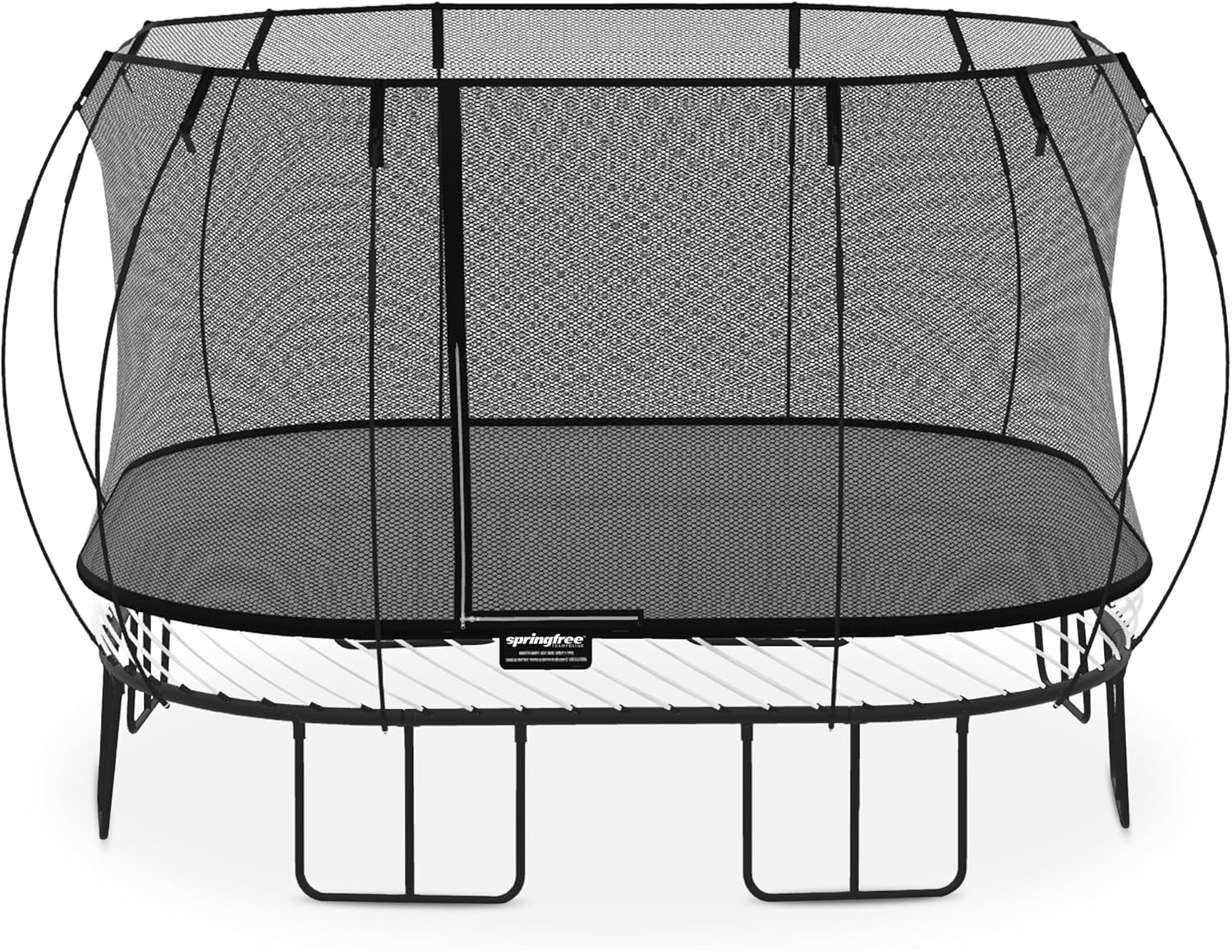 Click here to learn more about this trampoline
Click here to learn more about this trampoline
Garden Trampoline FAQ
What’s the best trampoline for a small garden?
For compact spaces, consider an in-ground trampoline like the Avyna Pro-Line or a small round model like the Springfree 8ft. These minimize visual impact and fit better in tight areas.
Are in-ground trampolines safer than above-ground models?
Yes, they reduce fall height and eliminate the need for a ladder. However, they still require a safety net and proper drainage underneath.
Do I need to excavate for an in-ground trampoline?
Yes. In-ground models like the Avyna Pro-Line require digging a pit to accommodate the frame and bounce depth. This adds installation cost but greatly improves aesthetics.
Will a trampoline ruin my lawn or garden?
It can if left unchecked. Rotate above-ground trampolines periodically, use grass protection mats, or opt for in-ground styles to maintain your lawn’s health.
What should I look for in a garden trampoline?
Prioritize weather-resistant frames, UV-stable mats, enclosure safety, and colors that match your landscape. If visual appeal matters, avoid bright colors and bulky frames.
Can adults use garden trampolines too?
Yes! Many models like the Avyna and Jumpflex are rated for 300–550 lbs and provide excellent bounce for all ages.
Final Thoughts
If your goal is to preserve your garden’s beauty while adding a fun, high-performance trampoline, opt for:
- In-ground trampolines like the Avyna Pro-Line for seamless integration
- Sleek above-ground models like Jumpflex or Springfree for style-conscious families
A garden trampoline should enhance your outdoor space—not compete with it. Choose a model that complements your landscape and provides lasting fun for both kids and adults.
Best Heavy-Duty Trampolines for Adults (2026 Buyer’s Guide)
Click Here For Our Favorite Heavy-Duty Trampoline
If you’re an adult looking for a trampoline, you need something beyond the average backyard bounce. Whether you’re into fitness, fun, or full-on aerial tricks, a heavy-duty trampoline can offer the durability, safety, and performance you need. This guide reviews the top-rated trampolines built to handle adult weight, frequent use, and serious airtime.
What Makes a Trampoline “Heavy-Duty”?
Heavy-duty trampolines are defined by:
- High weight capacity (usually 350 lbs or more)
- Reinforced frames (galvanized or powder-coated steel)
- Performance-grade springs (longer, thicker, or double-staged)
- Durability (UV-resistant mats, all-weather enclosures)
- Warranties that reflect the manufacturer’s confidence
Top Picks: Quick Comparison
| Trampoline | Size | Weight Limit | Spring Type | Bounce Quality | Warranty | Best For |
|---|---|---|---|---|---|---|
| Avyna Pro-Line 10×17 | 10×17 ft | 1,750 lbs | 134 x 8.5″ springs | Powerful, pro-level | Lifetime (frame) | Athletic adults, flips |
| AlleyOOP + PowerBounce | 14–17 ft | ~350–400 lbs (dynamic) | PianoSprings + PowerBounce | Very responsive, variable | Lifetime (frame) | High-performance bouncing |
| Zupapa 15-Foot Saffun | 15 ft | 425 lbs | Traditional | Balanced & smooth | 10 years (frame) | Family backyard use |
| Jumpflex HERO™ | 12–15 ft | 550 lbs | High-bounce springs | Deep, smooth bounce | 10 years (frame) | Adults, larger users |
| Vuly Thunder 2 Pro | Various | ~330 lbs* (per user) | Leaf Spring System | Vertical, controlled | 10 years (frame) | Safety + vertical control |
*Vuly uses a dynamic load rating. Real-world use comfortably supports adults depending on jump style.
Click Here For Our Favorite Heavy-Duty Trampoline
🥇 Avyna Pro-Line Trampoline
- Max Weight: 1,750 lbs tested (real-world use up to 1,100 lbs)
- Spring System: 134 double-galvanized 8.5” springs
- Frame: 11 & 14 gauge hot-dipped galvanized steel
- Bounce Style: Powerful and responsive
- Warranty: Lifetime on frame
- Ideal For: Serious adult jumpers, flips, athletic training
This is the gold standard of backyard trampolines. With industrial-grade construction and unmatched weight capacity, the Avyna Pro-Line is perfect for frequent adult use.
🏆 AlleyOOP with PowerBounce
- Max Weight: ~350–400 lbs
- Spring Tech: VariableBounce + optional PowerBounce
- Bounce Style: High, smooth, injury-reducing
- User Praise: \”Very sturdy,\” \”great bounce\”
- Warranty: Lifetime on frame
- Ideal For: High-performance bouncing, athletic adults
If you want the most refined spring-based experience, this is it. The customizable bounce system makes it ideal for larger jumpers who also want soft landings.
✅ Zupapa 15-Foot Saffun Trampoline
- Max Weight: 425 lbs
- Frame: Full-length poles to ground, galvanized steel
- Bounce Style: Smooth, stable, great for family use
- Warranty: 10 years on frame
- Ideal For: Adults who want a safe, dependable backyard trampoline
Zupapa balances affordability with solid specs. It’s a great choice for adults who value stability and a longer warranty at a reasonable price.
💪 Jumpflex HERO™
- Max Weight: 550 lbs
- Frame: Dual-ring high-tensile steel
- Springs: Long, high-bounce
- Bounce Style: Deep, smooth, airtime-heavy
- Warranty: 10 years
- Ideal For: Larger users, high-jump adults
Engineered for big bouncers, the HERO™ delivers a soft launch and controlled landings. Its sleek frame and high weight rating make it a top contender for adults.
⚙️ Vuly Thunder 2 Pro
- Max Weight: ~330 lbs per user
- Spring Tech: Patented Leaf Springs (no coil springs)
- Bounce Style: Pure vertical, safe, low-impact
- Safety: Fewer pinch points, excellent enclosure design
- Warranty: 10 years
- Ideal For: Safety-conscious jumpers, long-term use
If traditional coil springs aren’t your thing, the Vuly Thunder 2 Pro is a unique and safe alternative. The bounce is vertical, smooth, and great for joint protection.
Click Here For Our Favorite Heavy-Duty Trampoline
Final Thoughts
When choosing a heavy-duty trampoline for adult use, prioritize build quality, weight capacity, and spring tech. Whether you’re flipping, exercising, or just having fun, any of these top-tier trampolines will offer a reliable and safe experience.
Everything You Need to Know About Rebounder Trampolines
Rebounder trampolines, also known as mini trampolines, are a fantastic way to stay fit. They provide a low-impact workout good for cardiovascular health, strength, and coordination—all while being compact and easy to store at home. This guide covers everything you need to know about choosing the right rebounder, top recommendations, and answers to frequently asked questions.
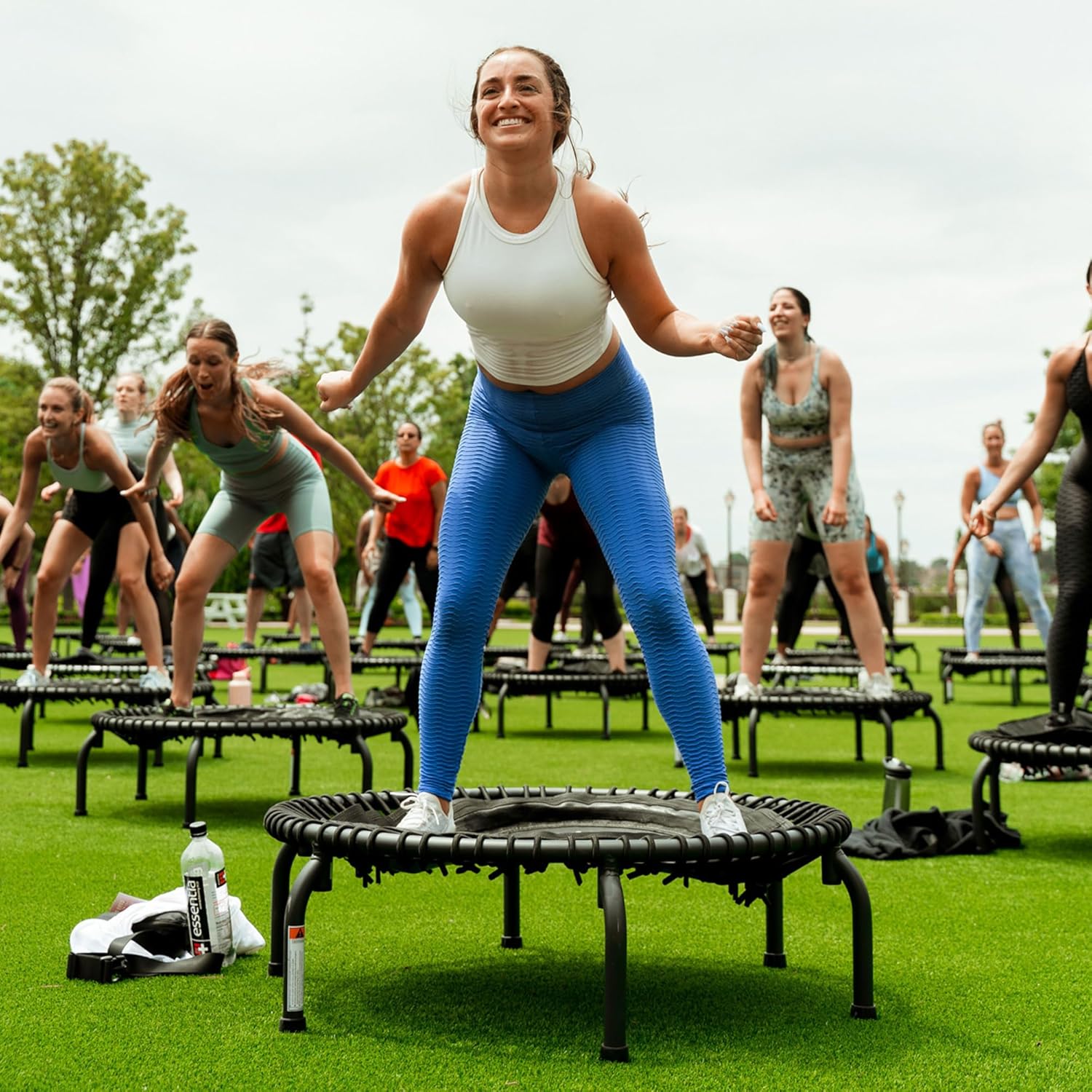 Click here for our favorite Rebounder pick
Click here for our favorite Rebounder pick
What is a Rebounder Trampoline?
A rebounder trampoline is a smaller, more portable version of a standard trampoline, designed for indoor workouts. Unlike larger backyard trampolines, rebounders are built with fitness in mind and are often used for cardio and strength training routines. They offer a controlled bounce, which is easier on joints and ideal for home workouts. To see my favorite pick, click here.
The Benefits of Using a Rebounder Trampoline
Click here for my favorite rebounder trampoline pick
Rebounders have become increasingly popular for their numerous health benefits, including:
- Improved Cardiovascular Health: Rebounding provides a heart-pumping workout that’s gentle on the joints, making it an excellent cardio option.
- Lymphatic Support: The up-and-down motion helps promote lymphatic drainage, which can support the body’s natural detox process.
- Core and Muscle Strengthening: Rebounding requires balance, engaging your core, legs, and glutes.
- Stress Relief: Rebounding can be a fun, mood-boosting workout that reduces stress and releases endorphins.
Types of Rebounder Trampolines
When choosing a rebounder, it’s helpful to know the different types available:
- Spring vs. Bungee Rebounders: Spring rebounders are often firmer, while bungee models offer a smoother, quieter bounce, which is gentler on the joints.
- Foldable vs. Non-Foldable Models: Foldable rebounders are easy to store and transport, while non-foldable ones tend to offer more stability.
- With or Without Handlebars: Some rebounders come with handlebars, which add extra stability. This feature is useful for beginners or those who need additional support during workouts.
Click here for our favorite Rebounder pick
Key Considerations When Buying a Rebounder Trampoline
To choose the best rebounder for your needs, consider the following:
- Size and Weight Capacity: Choose a size that fits your available space and ensure the weight capacity matches the user.
- Bounce Quality: Look for models with high-quality springs or bungees to ensure a comfortable and effective workout.
- Durability and Build Quality: Opt for sturdy frames and materials that will hold up over time, especially if you plan to use the trampoline frequently.
- Safety Features: Look for safety additions like non-slip mats, stable frames, and protective coverings over springs or bungees.
Top Rebounder Trampolines for Home Workouts
Here are some of the best rebounder trampolines available for home use:
| Brand/Model | Features | Size | Price Range |
|---|---|---|---|
| Leaps & Rebounds | Quiet bungee cords, large bounce area, sturdy | 40 inches | Affordable |
| JumpSport 250 | Silent FlexBounce, stable no-tip frame, workout DVD | 250 sq. in bounce | Mid-range |
| JumpSport 350 PRO | Adjustable bounce firmness, durable, arched legs | 35.5 inches | Higher-end |
| MaXimus Pro | Foldable, comes with resistance bands, workout DVD | Compact | Mid-range |
| JumpSport 370 | Customizable tension, stable arched legs | 39 inches | Higher-end |
These models offer different features to suit a range of fitness needs and budgets. Each of them is known for stability, high-quality bounce, and additional features that enhance the workout experience.
Top Exercises for Your Rebounder Trampoline
Rebounders provide a variety of workout options that are low-impact yet effective. Here are some popular exercises:
- Basic Bounce: A simple exercise to warm up and engage the whole body.
- Jumping Jacks: These are great for increasing heart rate while toning arms and legs.
- High Knees: Improve balance and strengthen the core by alternating knee lifts.
- Jogging in Place: This cardio option mimics running while reducing impact on joints.
Rebounder Trampoline Maintenance and Safety Tips
To keep your rebounder in top shape, follow these maintenance and safety tips:
- Check for Wear and Tear: Regularly inspect bungees, springs, and the frame for any signs of wear.
- Use on a Stable Surface: Place your rebounder on a flat, stable surface to avoid tipping.
- Clean as Needed: Wipe down the mat and frame regularly to keep your equipment in good condition.
Frequently Asked Questions (FAQ)
What is the difference between a rebounder and a mini trampoline?
Both are small trampolines, but rebounders are specifically designed for fitness, providing a softer, low-impact bounce ideal for cardio and toning exercises.
Can a rebounder help with weight loss?
Yes, rebounders are excellent for weight loss because they provide a full-body workout that boosts cardiovascular health, builds muscle, and burns calories effectively.
Are rebounders safe for all ages?
Generally, yes, rebounders are safe for most ages, but children should use them under adult supervision.
How much space do I need for a rebounder trampoline?
Most rebounders need about 3-4 feet in diameter of floor space, plus enough clearance overhead for safe jumping.
Do rebounders require assembly?
Some models arrive fully assembled, while others require setup. Many brands provide tools or instructions to make assembly simple, but it’s best to check with the manufacturer.
Click here for our favorite Rebounder pick
Final Thoughts
Rebounder trampolines offer an effective, versatile way to work out from the comfort of home. With so many options available, you can easily find a model that fits your workout style, space, and budget. Whether you’re looking to improve cardio health, strengthen your core, or just have a bit of fun, a rebounder trampoline is a fantastic addition to any fitness routine.
In-Ground Trampoline Drainage: How to Keep Your Pit Dry and Safe
Installing an in-ground trampoline is a great way to blend fun and aesthetics into your backyard. But many homeowners quickly realize that digging a hole in the ground creates one major challenge: drainage. Without proper planning, your trampoline pit can turn into a muddy, flooded mess. This guide walks you through everything you need to know to ensure your in-ground trampoline stays dry, safe, and functional year-round.
Why Drainage Matters
-
Safety: Standing water can lead to rusted springs, mold growth, and slippery surfaces.
-
Structural Integrity: Saturated soil can erode or collapse around the trampoline frame.
-
Maintenance: Poor drainage means frequent cleaning and potential long-term damage.
Step-by-Step: How to Handle In-Ground Trampoline Drainage
1. Design the Pit with Drainage in Mind
Dig the hole slightly deeper than the trampoline frame to allow room for gravel or a drainage system. The pit should also slope gently to one side to encourage water flow toward your drainage solution.
2. Add a Gravel Drainage Base
At the bottom of the pit, add 4 to 6 inches of crushed gravel. This allows water to filter through instead of pooling directly under the trampoline and provides a stable foundation.
3. Choose the Right Drainage System
Depending on your yard’s conditions, you’ll need one of these common solutions:
Option A: French Drain
-
What it is: A trench filled with gravel and a perforated pipe.
-
How it works: Redirects water away from the trampoline pit to a safe runoff area.
-
Best for: Slightly sloped yards or moderate drainage issues.
Option B: Sump Pump System
-
What it is: A pump installed in a basin at the lowest point of the trampoline pit.
-
How it works: Automatically pumps out water during rain.
-
Best for: Flat yards, heavy clay soil, or frequent flooding.
Option C: Dry Well (Soakaway Pit)
-
What it is: A buried container or gravel-filled pit that holds water and slowly disperses it.
-
How it works: Collects water and lets it gradually seep into the soil.
-
Best for: Yards with decent drainage and moderate rainfall.
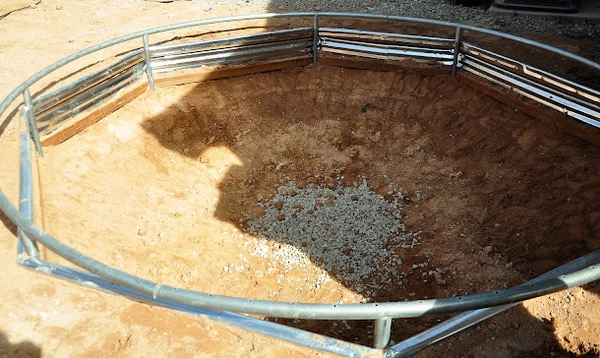
4. Improve Drainage Around the Trampoline
Make sure the surrounding ground is graded so that water flows away from the trampoline area. You can also use swales, berms, or garden drains to keep surface water from entering the pit.
5. Ongoing Maintenance
-
Clear leaves and debris from gravel and drainage pipes.
-
Check for standing water after storms.
-
Test sump pumps every season to ensure they still function.
Bonus Tip: Use a Weather-Resistant Cover
When not in use, cover your trampoline to prevent rain from collecting in the pit. This simple step can significantly reduce water issues.
FAQs
Q: Can I just use gravel without any other drainage system?
A: Gravel helps with minor water control, but without a way to move water out of the pit, you’re still at risk for flooding.
Q: How do I know if I need a sump pump?
A: If your yard retains water after rain or your pit stays wet for more than 24 hours, a sump pump is a smart investment.
Q: Can I add drainage to an existing trampoline setup?
A: Yes, you can retrofit a French drain or sump pump into most existing pits without redoing the entire area.
Conclusion
In-ground trampolines are a sleek backyard upgrade—but without proper drainage, they can cause more headaches than joy. By planning your pit design carefully and using the right drainage method for your yard, you can ensure your trampoline stays safe, dry, and low-maintenance all year long.
Top 7 Best Rectangle Trampolines – The Complete Guide for Families, Athletes & Backyard Fun
Thinking about buying a rectangle trampoline? You’re not alone. Rectangle trampolines are increasingly popular with families, athletes, and anyone who wants the ultimate backyard bounce experience. Unlike traditional round trampolines, rectangles offer a higher, more consistent bounce, making them a top pick for gymnasts and serious jumpers—but they’re just as fun (and safe) for everyday family use.
This guide covers everything you need to know about the best rectangle trampolines in 2026, including what to look for, detailed product breakdowns, a comparison table, answers to common buyer questions, and a checklist to help you pick the perfect model.
Click Here For Our Favorite Trampoline
Why Choose a Rectangle Trampoline?
Rectangle trampolines aren’t just for gymnasts or cheerleaders—though they are the gold standard for anyone serious about flips and tricks. Here’s why rectangle trampolines are different:
- Even Bounce: Springs work independently, so bounce height is consistent no matter where you jump.
- Bigger Jumping Surface: More usable space edge-to-edge, great for multiple users.
- Pro Performance: Preferred for gymnastics, cheer, and training.
- Fits Yard Corners: The rectangular shape often fits spaces where round trampolines won’t.
If you want the best possible bounce, plan to have more than one person jumping, or just want a trampoline that feels “pro” in every way, a rectangle model is worth the upgrade.
What to Look For When Buying a Rectangle Trampoline
Safety Features
- Full enclosure net with sturdy zippers/latches
- Padded poles and covered springs
- Gap-free jumping surfaces
- Safety certifications (ASTM, TUV)
Size & Space
- Common sizes: 9×15, 10×17, 13×16, 16×16 feet
- Measure your yard—allow for extra clearance around all sides
Bounce Quality & Weight Limit
- High-performance springs = better bounce
- Check max weight capacity (ranges from 200 to 1,100+ lbs)
- Some models support adults and kids together
Frame & Durability
- Rust-resistant steel, thick-gauge frame
- UV-resistant mat and net
- Heavy-duty construction for outdoor use
Assembly
- How many people? (Usually 2+)
- Time needed (2–6 hours average)
- Are instructions clear? Any videos?
Accessories
- Ladder, basketball hoop, anchor kit, storage bag
- Weather cover for off-season
Warranty & Support
- Longer frame/mat/spring warranties are better
- Responsive customer service for parts & questions
Top 7 Best Rectangle Trampolines (2026)
1. Acon Air 16 Sport HD Rectangular Trampoline
- Best For: Pro-level performance, big families, gymnasts
- Features: Massive 10×16’ jump area, 1,100 lb weight limit, premium enclosure, ultra-thick frame, ladder included
- Pros: Legendary bounce, extremely durable, safe for all ages
- Cons: High price, large footprint
- Why Buy: If you want the best of the best for big families or aspiring athletes
2. Acon Air 13 Sport HD Rectangular Trampoline
- Best For: Smaller yards, quality-focused buyers
- Features: 8×13’ size, pro-level build, premium net and frame
- Pros: Same build quality as Acon 16 but fits smaller yards
- Cons: Still pricier than budget brands, assembly takes time
- Why Buy: You want top-tier performance but have limited space
3. Upper Bounce Mega 10′ x 17′ Gymnastics Rectangle Trampoline
- Best For: Gymnasts, aspiring athletes
- Features: 10×17’ size, high-bounce springs, robust enclosure
- Pros: Spacious, strong bounce, good safety features
- Cons: Setup instructions can be tricky, warranty could be better
- Why Buy: Great for advanced jumpers or multiple kids at once
4. JumpKing 10’x15′ Rectangle Trampoline with Basketball Hoop
- Best For: Budget-conscious families, fun add-ons
- Features: 10×15’ size, comes with a basketball hoop, mid-range bounce
- Pros: Affordable for size, includes extras
- Cons: Not as sturdy as premium brands, lower weight limit
- Why Buy: Best value for money, especially if you want a hoop
5. Skywalker Rectangle 9’ x 15’ Trampoline
- Best For: Family fun, safety
- Features: Patented no-gap enclosure, strong UV mat, easy entry
- Pros: Excellent safety record, trusted brand, good price
- Cons: Weight limit lower than some competitors, not for serious gymnasts
- Why Buy: Top pick for families prioritizing safety and easy setup
6. Large Rectangle Trampoline with Enclosure (Walmart/SOFT INC.)
- Best For: Entry-level buyers, budget shoppers
- Features: 10×17’ or 9×15’ sizes, enclosure net, optional ladder, basic build
- Pros: Great price, solid bounce for recreational use
- Cons: Not for high-performance tricks, less durable long-term
- Why Buy: Perfect for young kids and first-time trampoline owners
7. Beast K9 10×17 Performance Rectangle Trampoline
- Best For: High jumpers, athletic teens and adults
- Features: Heavy-duty build, large jump zone, responsive springs
- Pros: Built for durability and power, serious bounce
- Cons: Expensive, limited user reviews
- Why Buy: If you want a trampoline that feels like a pro gym model
Rectangle Trampoline Comparison Table
| Model | Size | Weight Limit | Best For | Safety Features | Accessories | Price Range | Warranty |
|---|---|---|---|---|---|---|---|
| Acon Air 16 Sport HD | 10×16 ft | 1,100 lbs | Pros, Families | Premium enclosure | Ladder, net | $$$$ | 10 yrs+ |
| Acon Air 13 Sport HD | 8×13 ft | 800 lbs | Smaller Yards | Premium enclosure | Ladder, net | $$$ | 10 yrs+ |
| Upper Bounce Mega 10×17 | 10×17 ft | 500 lbs | Gymnasts | Full enclosure | Ladder, net | $$$ | 1 yr |
| JumpKing 10×15 + Hoop | 10×15 ft | 250 lbs | Budget, Kids | Full enclosure | Hoop, ladder | $$ | 1 yr |
| Skywalker Rectangle 9×15 | 9×15 ft | 250 lbs | Families, Safety | No-gap enclosure | Ladder, net | $$ | 3 yrs |
| Large Rectangle (Walmart/SOFT) | 10×17 ft | 400 lbs | Entry Level | Enclosure | Net, ladder (opt) | $ | 90 days |
| Beast K9 10×17 | 10×17 ft | 750 lbs | High Jumpers | Heavy-duty net | Ladder, net | $$$$ | 2 yrs |
Click Here For Our Favorite Trampoline
Frequently Asked Questions
Are rectangle trampolines safer than round ones?
They’re just as safe when installed properly, but always use the enclosure and ensure it’s set up on level ground.
Are rectangle trampolines harder to assemble?
They can take longer than round trampolines due to frame complexity. Having two people and following the instructions closely helps.
How do you maintain a rectangle trampoline?
Check bolts and frame regularly, clean the mat, store the ladder/net during storms, and cover or disassemble it in winter.
Can adults use these trampolines?
Most rectangle trampolines (especially premium models) have high weight limits—check specs before you buy!
Are rectangle trampolines good for small yards?
Smaller models (like 8×13 ft) can fit, but always measure your space and allow 3+ feet of clearance all around.
What’s the average lifespan?
Premium models can last 7–10 years or more with proper care. Budget models may need replacement parts sooner.
Buyer’s Checklist
- Measure your yard and pick a size that fits with extra space on all sides.
- Decide on a weight limit and bounce style—are you buying for athletes, adults, or just young kids?
- Compare warranty terms and customer support reviews.
- Look for safety certifications and full enclosure nets.
- Consider any extra features you want: ladder, basketball hoop, anchor kit.
- Double-check assembly details—can you handle it, or will you need help?
Final Thoughts & Recommendations
Rectangle trampolines are the best choice for anyone who wants superior bounce, plenty of space, and a pro feel in their backyard. The Acon Air 16 Sport HD is the ultimate pick for serious families and athletes, while the Skywalker and JumpKing offer excellent value for most families. Budget shoppers will find a great starter option at Walmart or similar stores.
Always prioritize safety—set up your trampoline properly, use the enclosure, and keep an eye on kids at all times.

